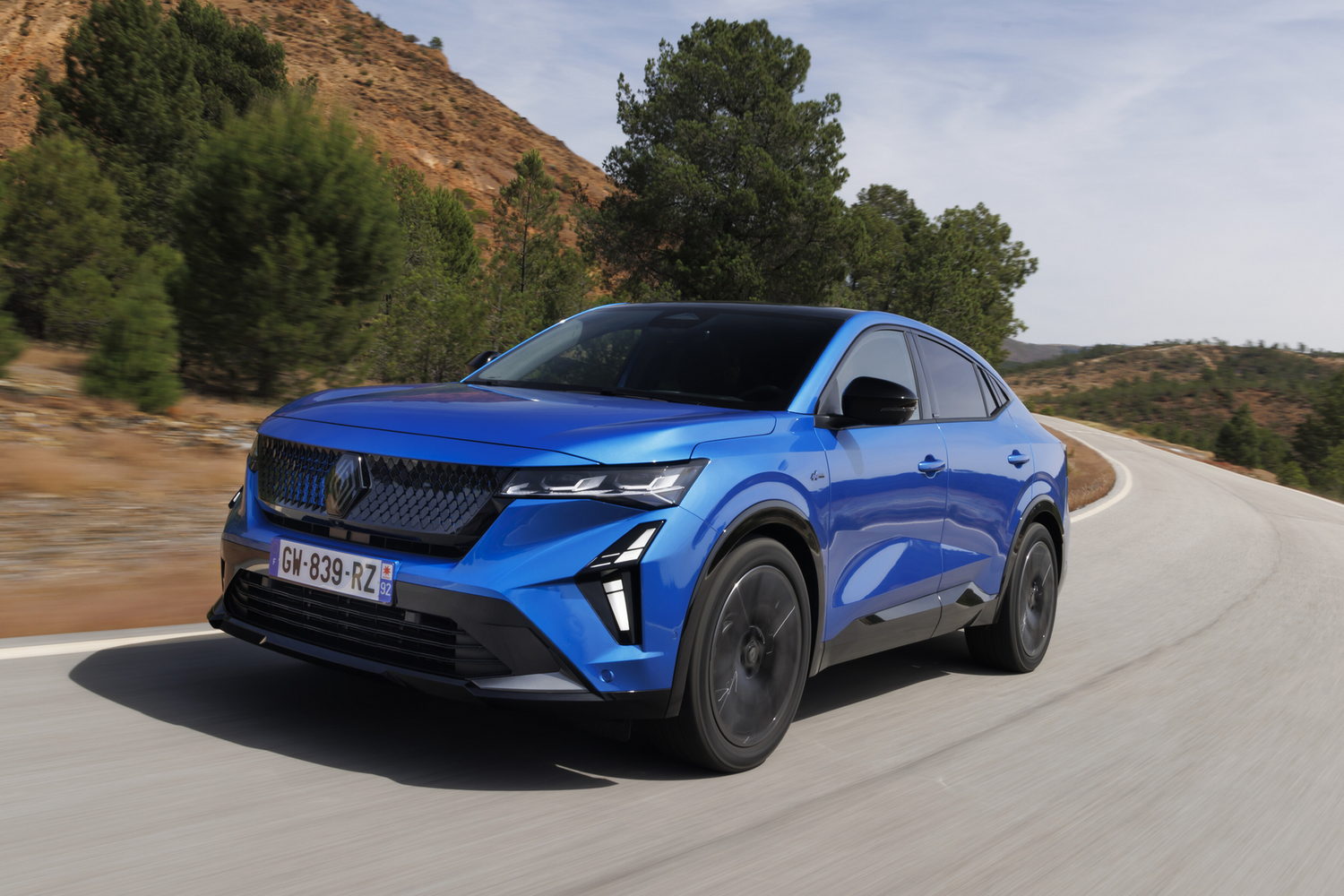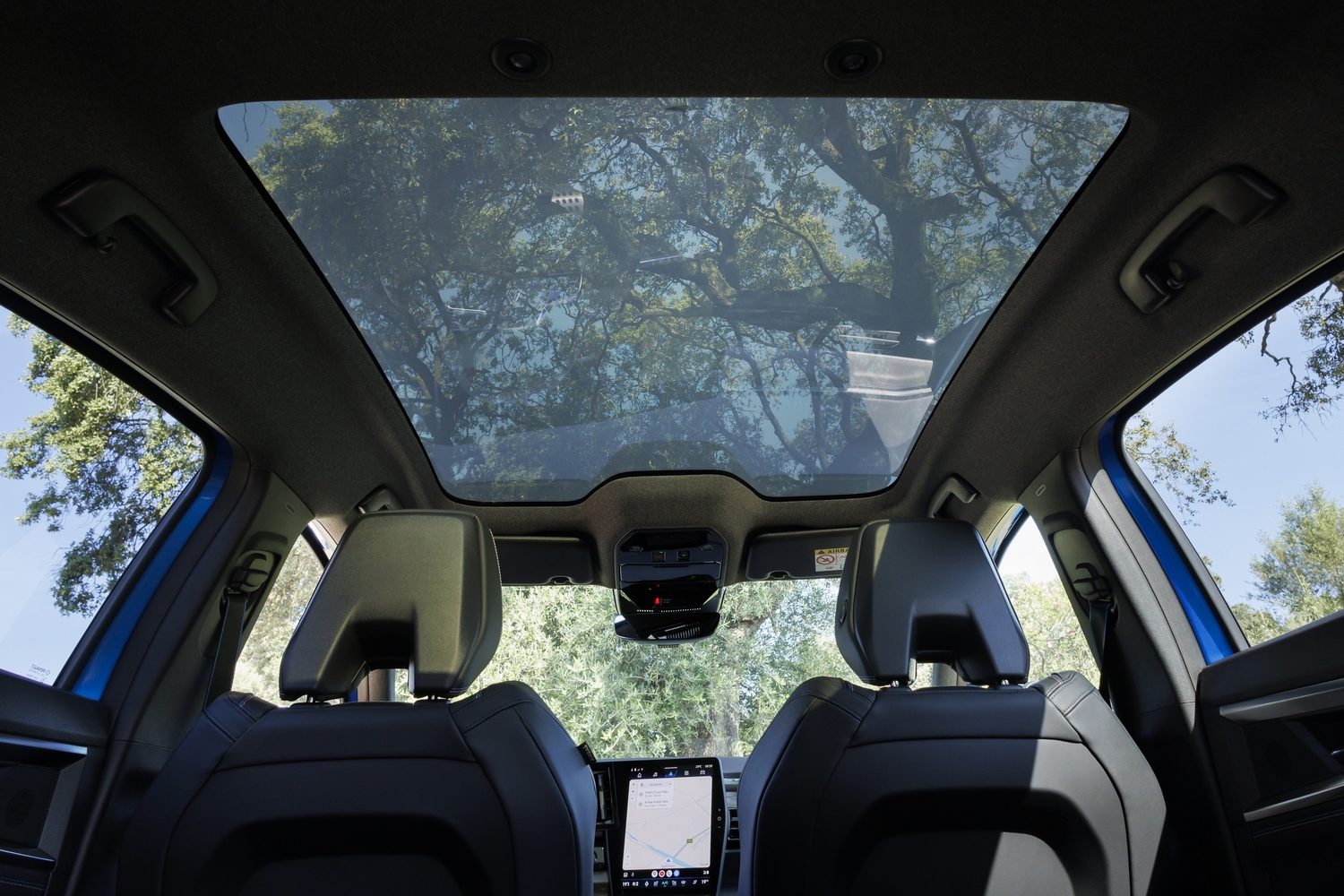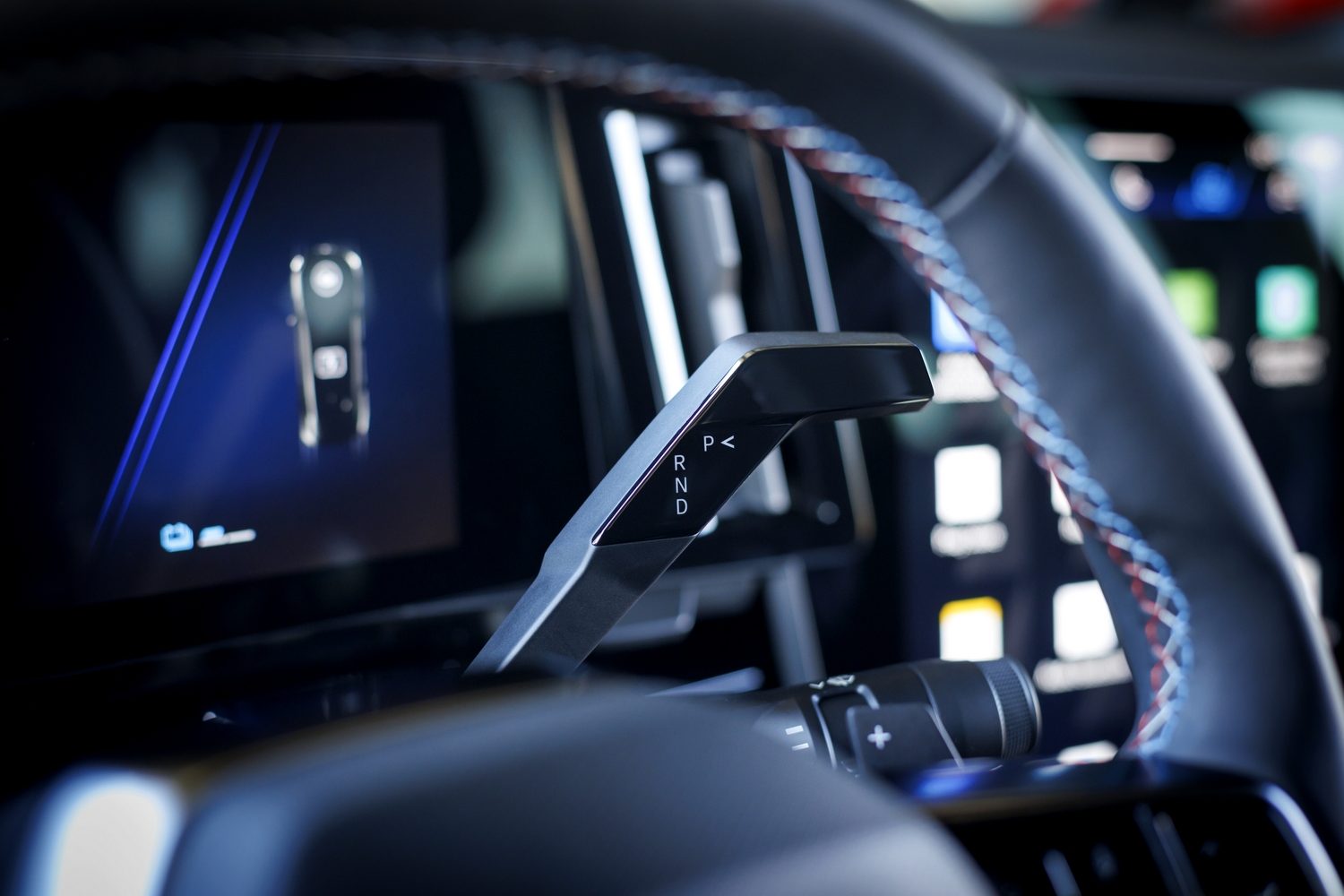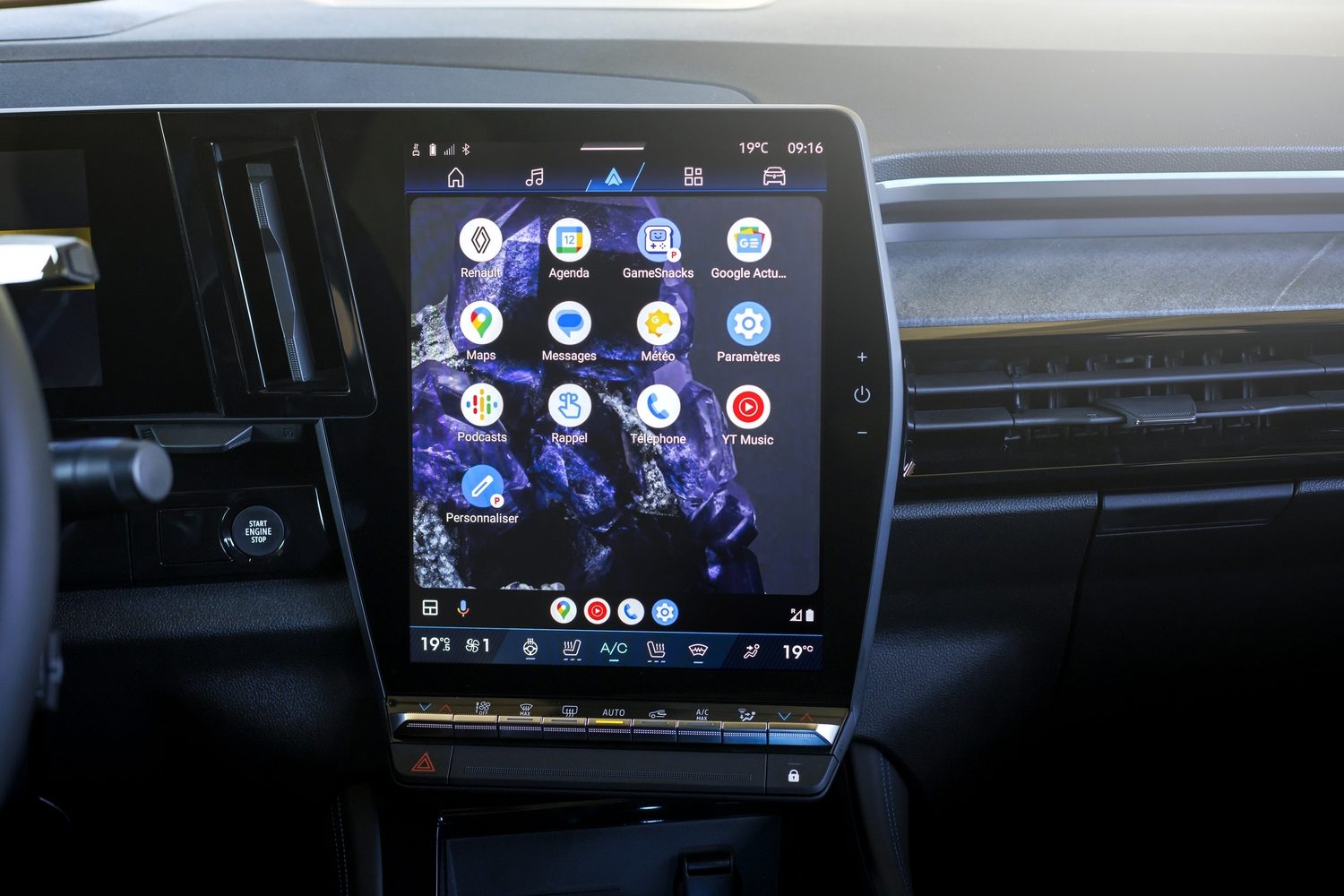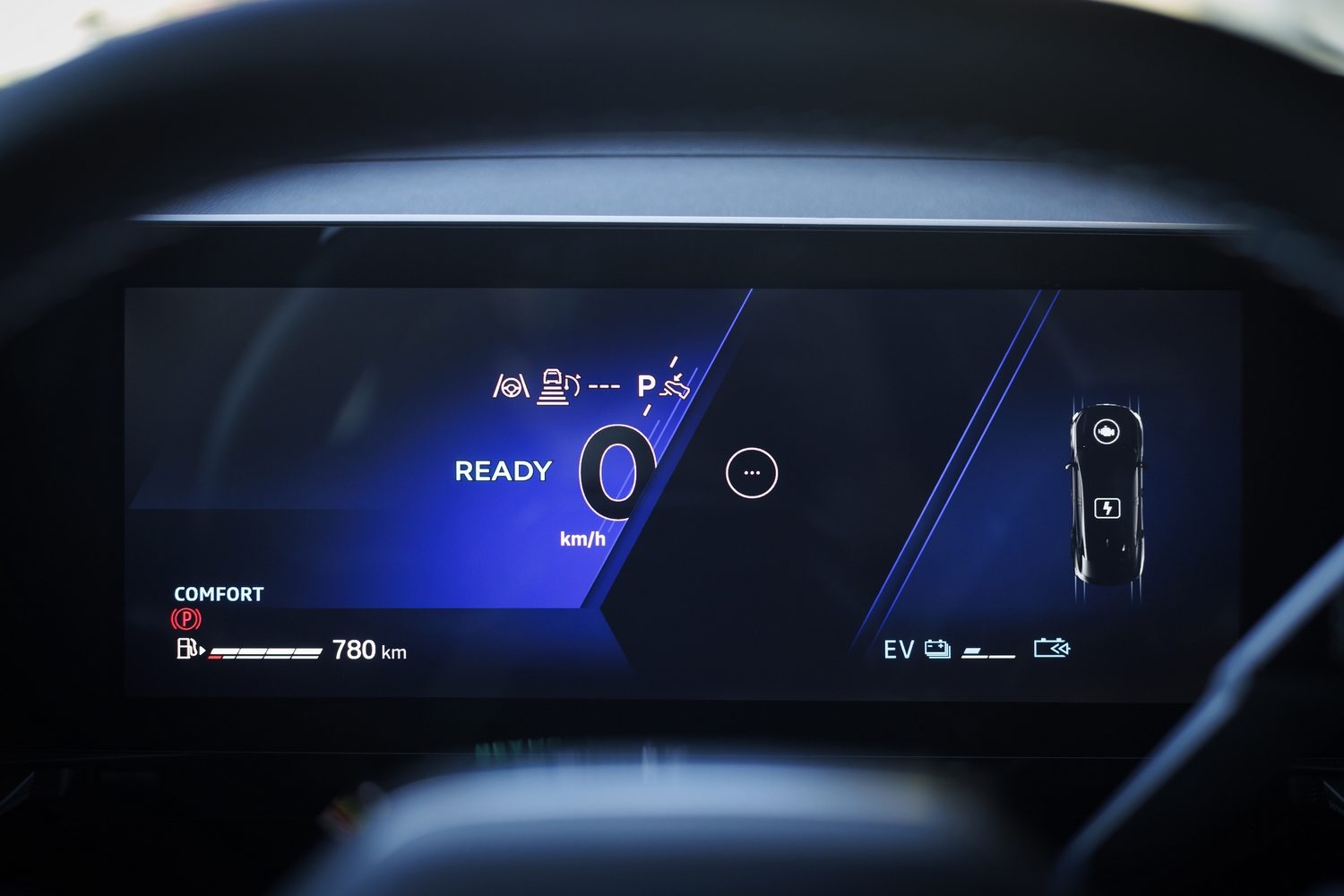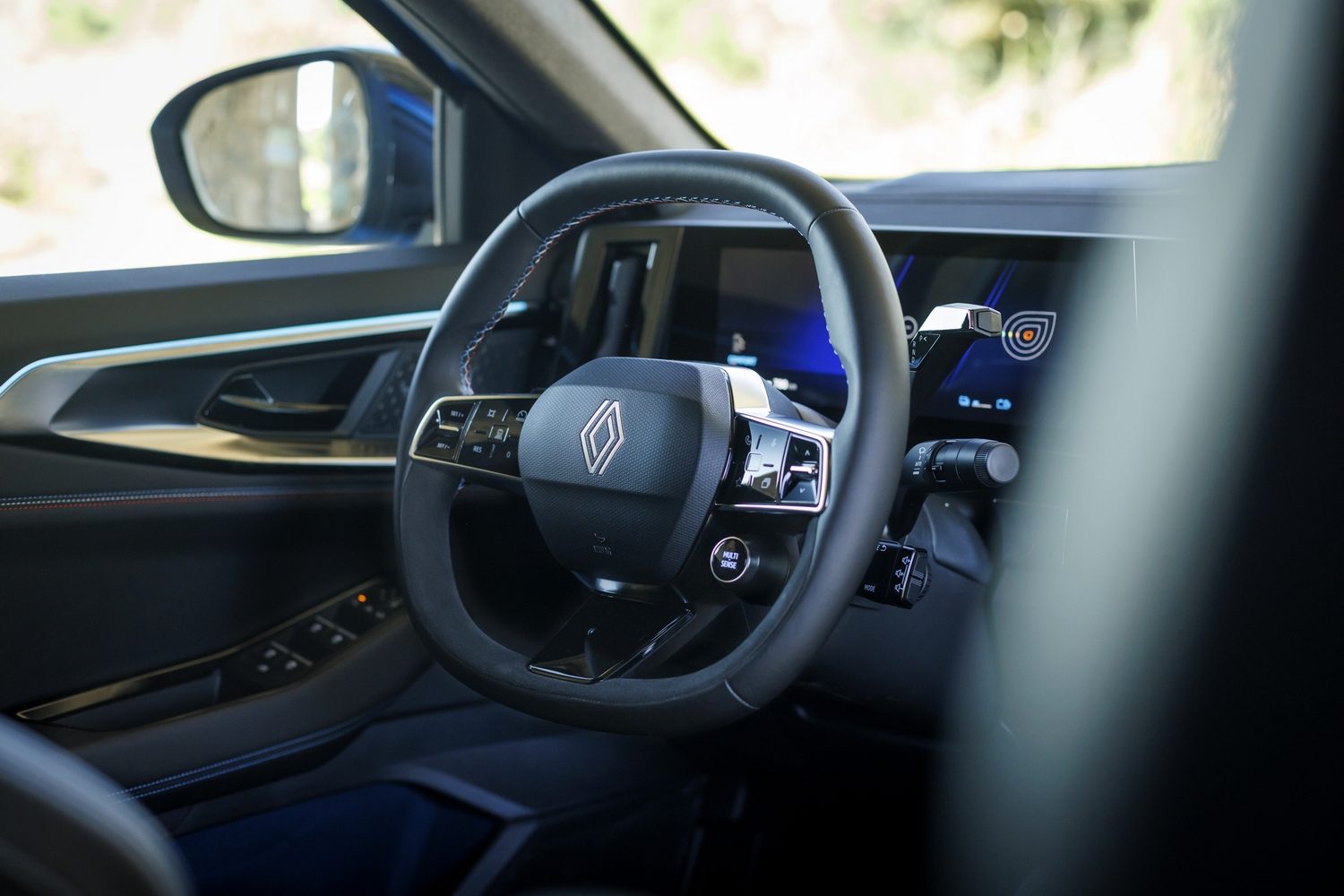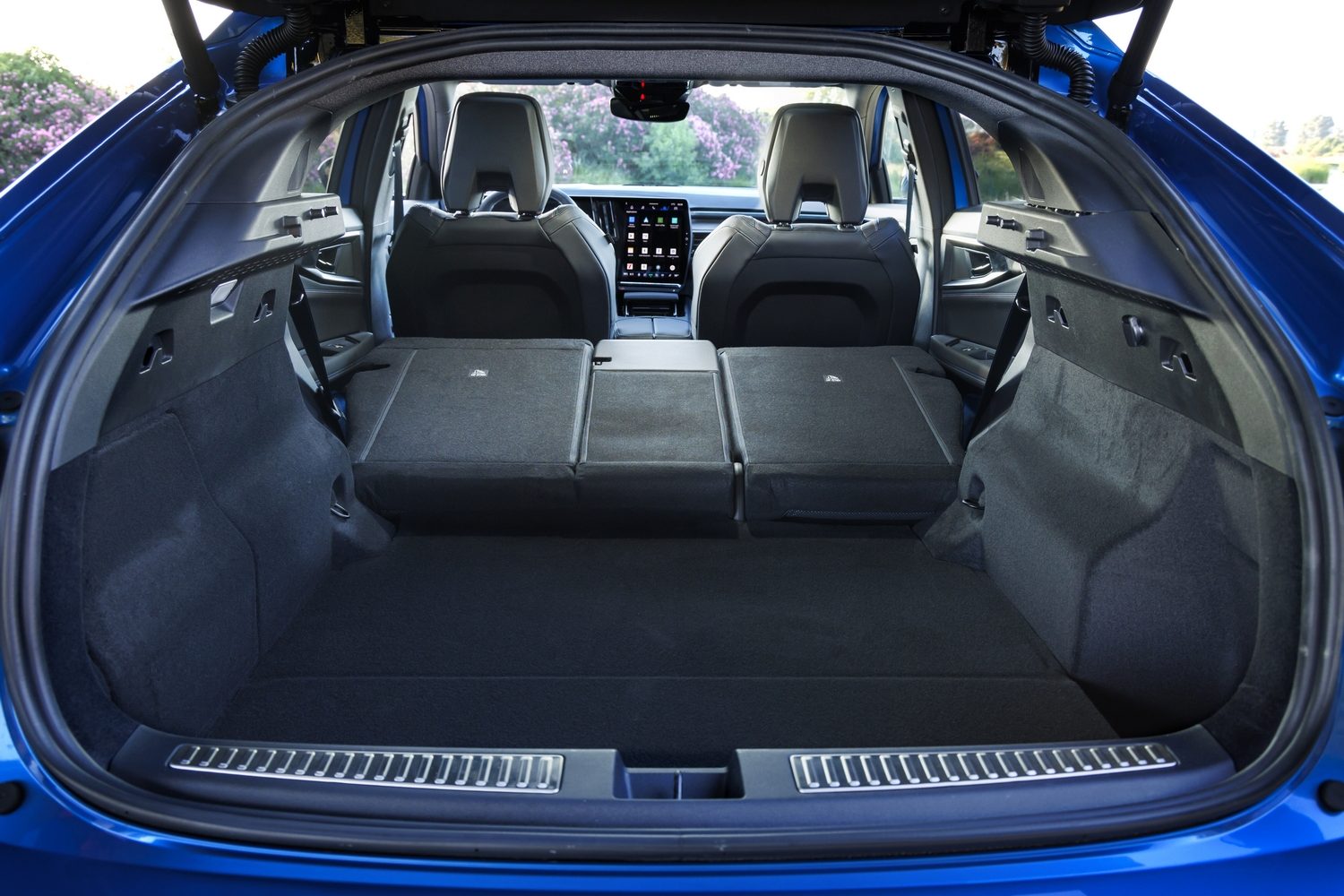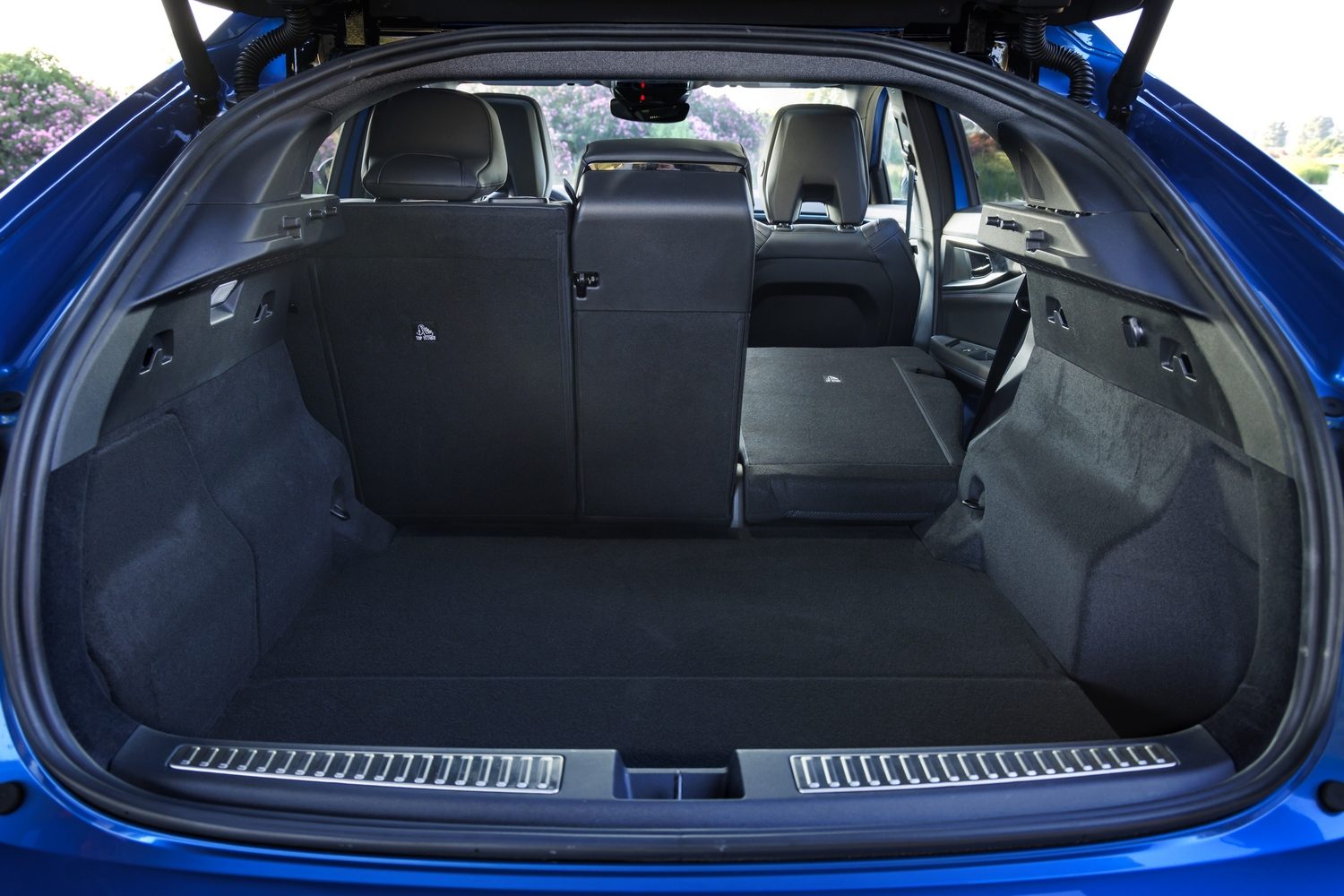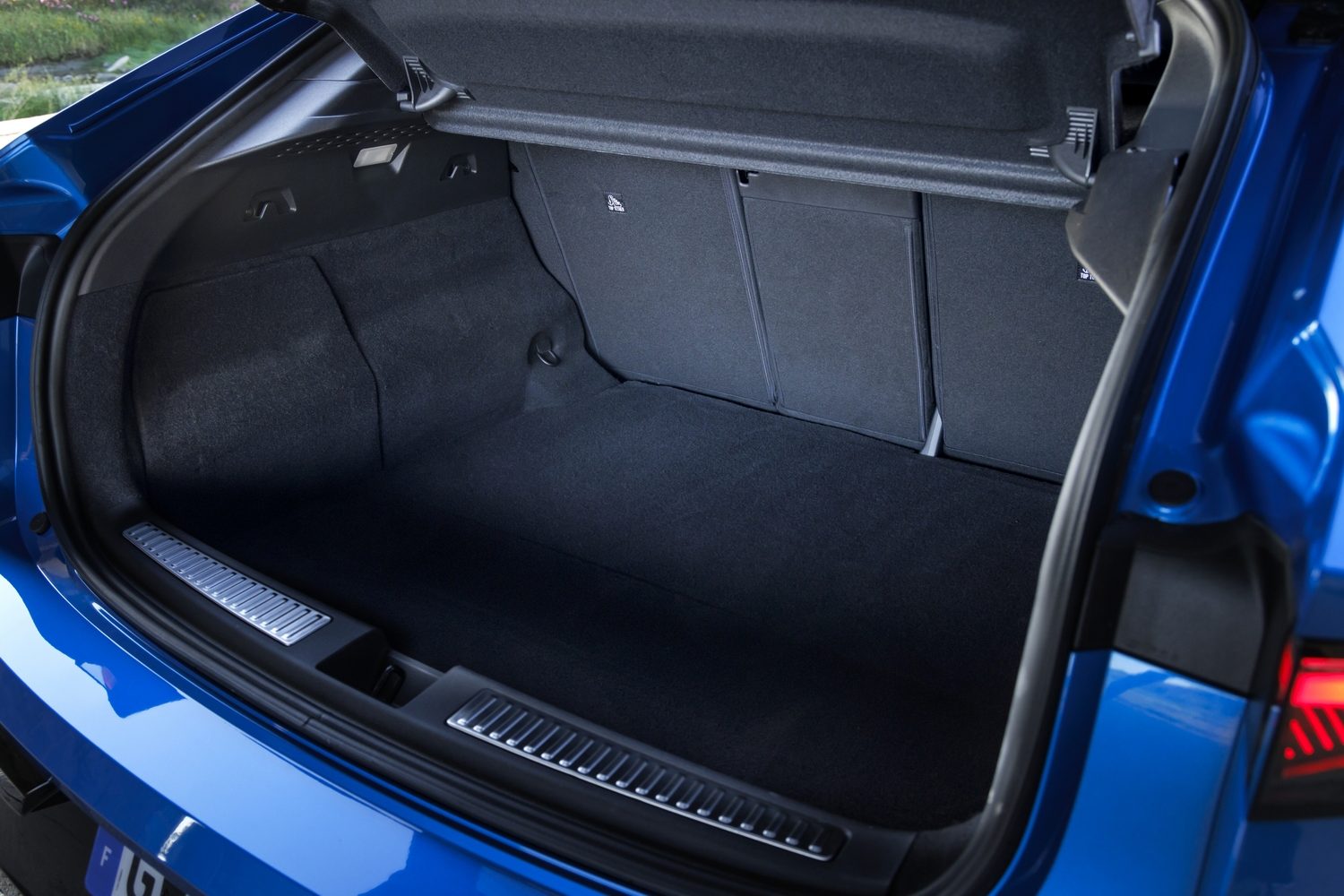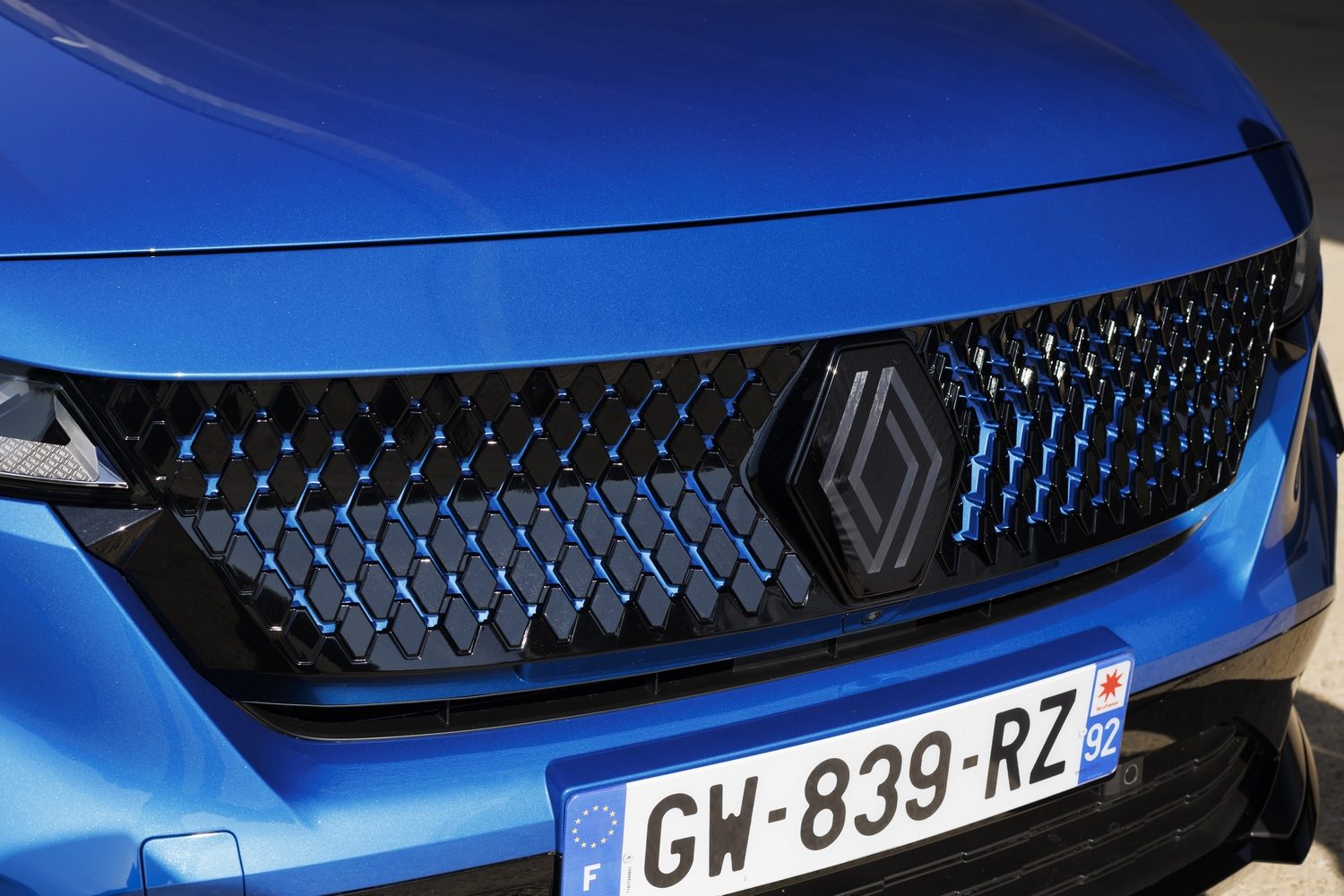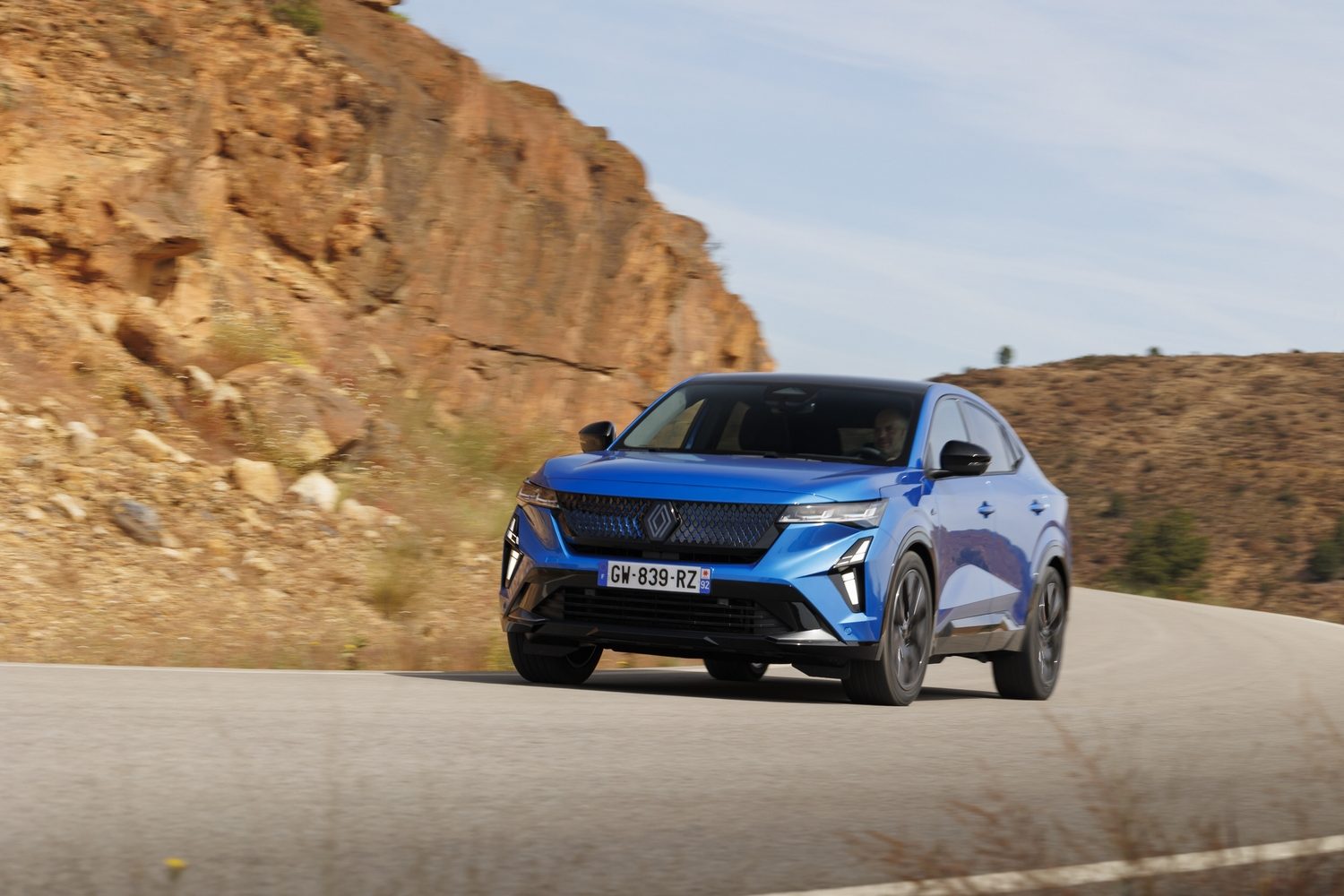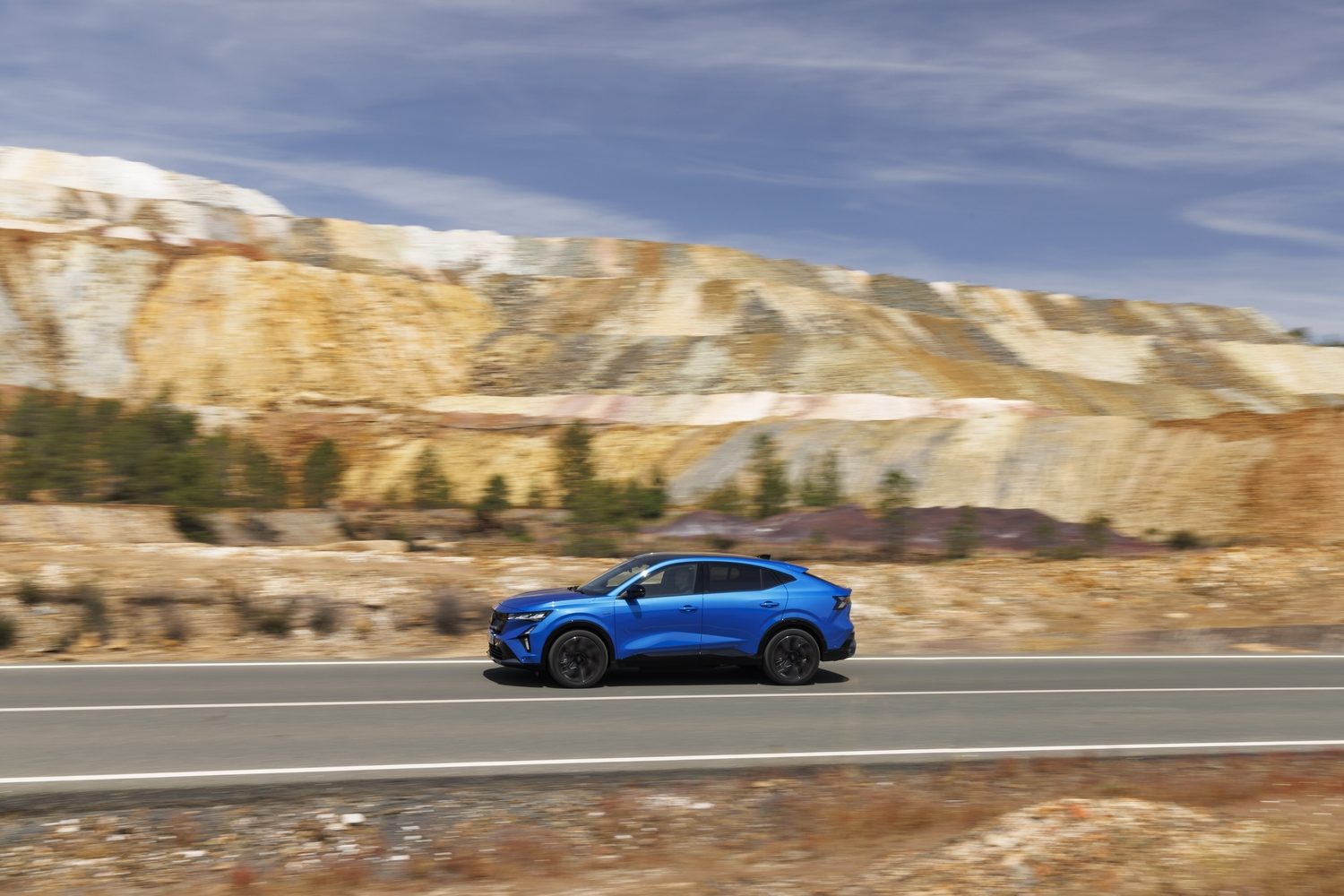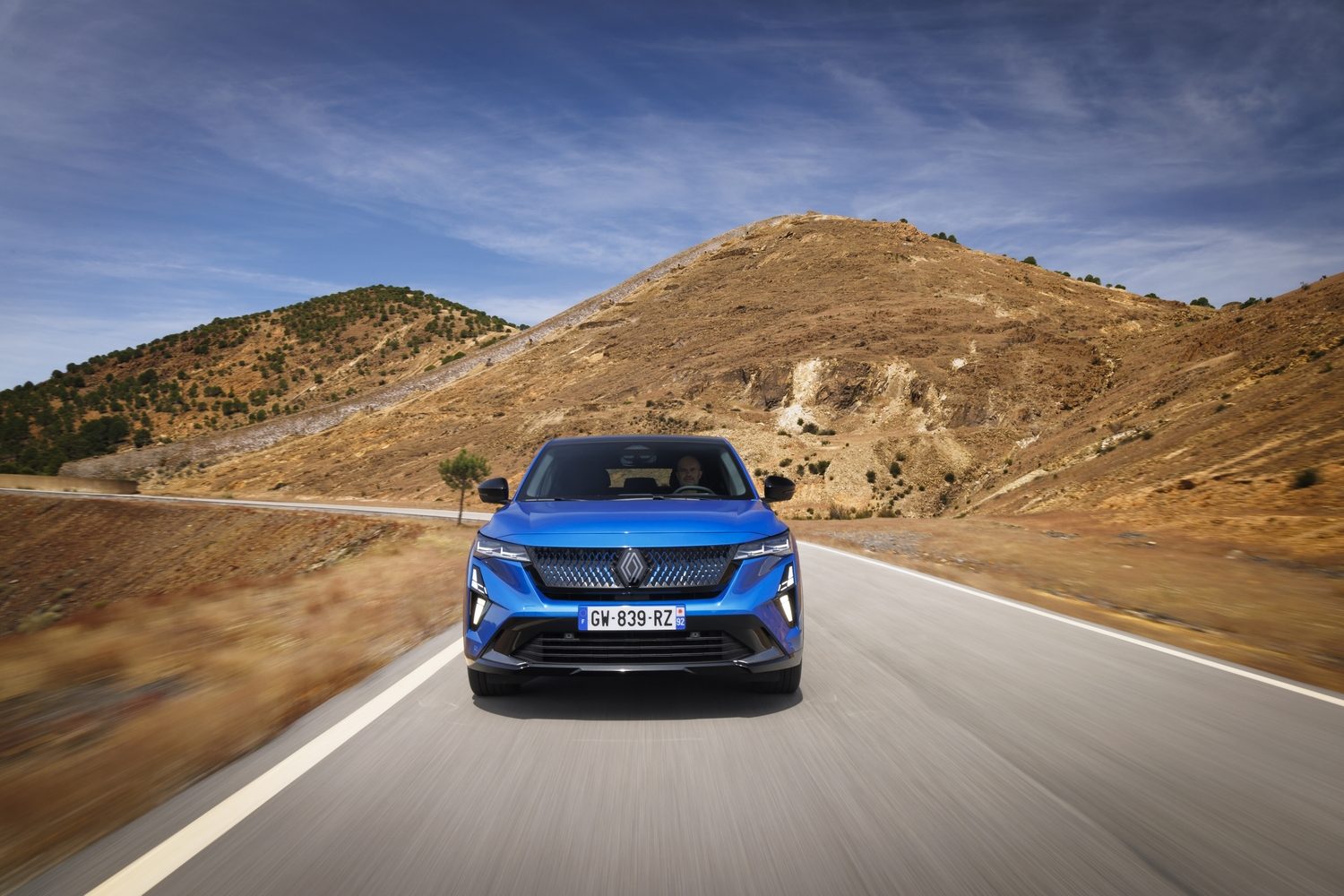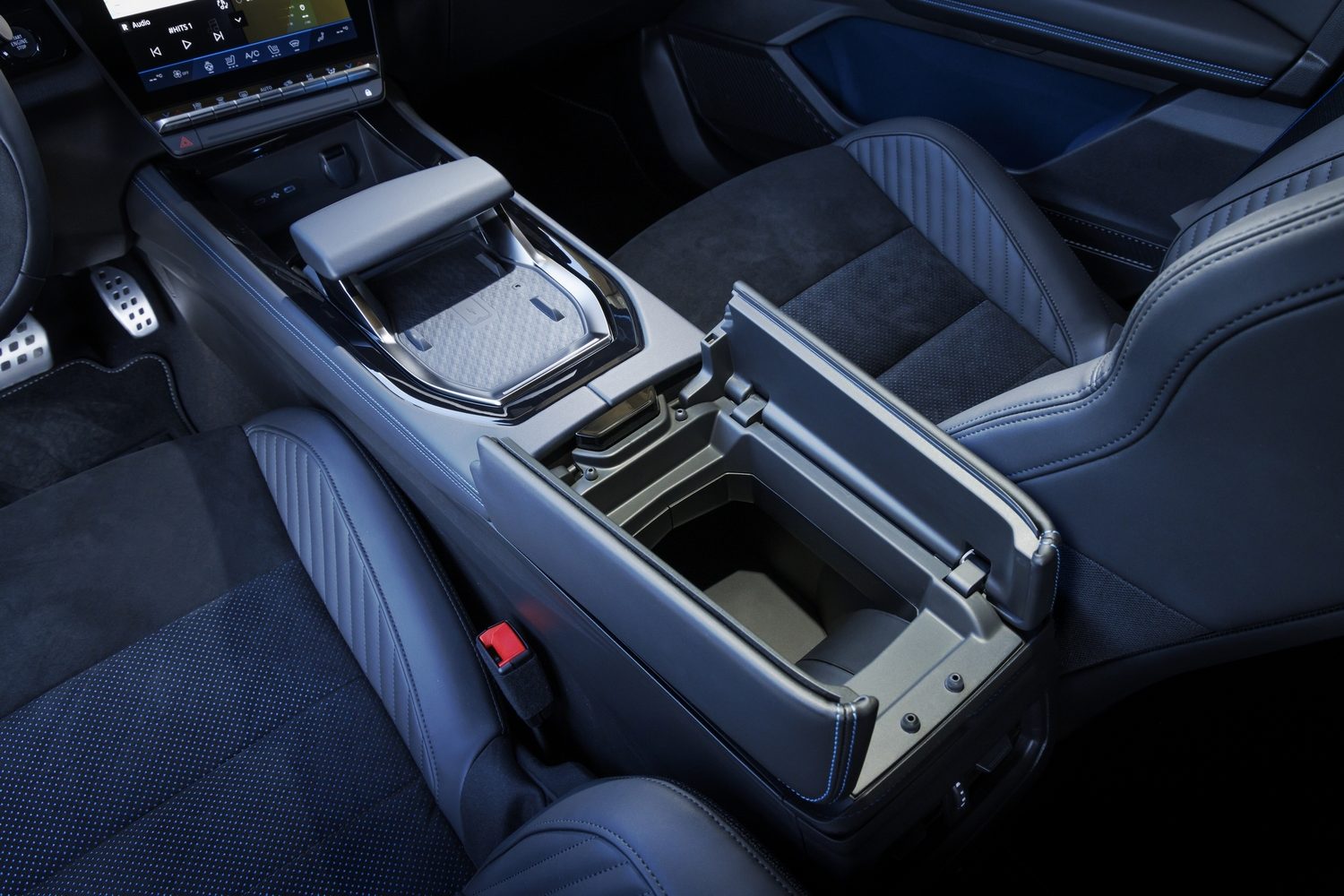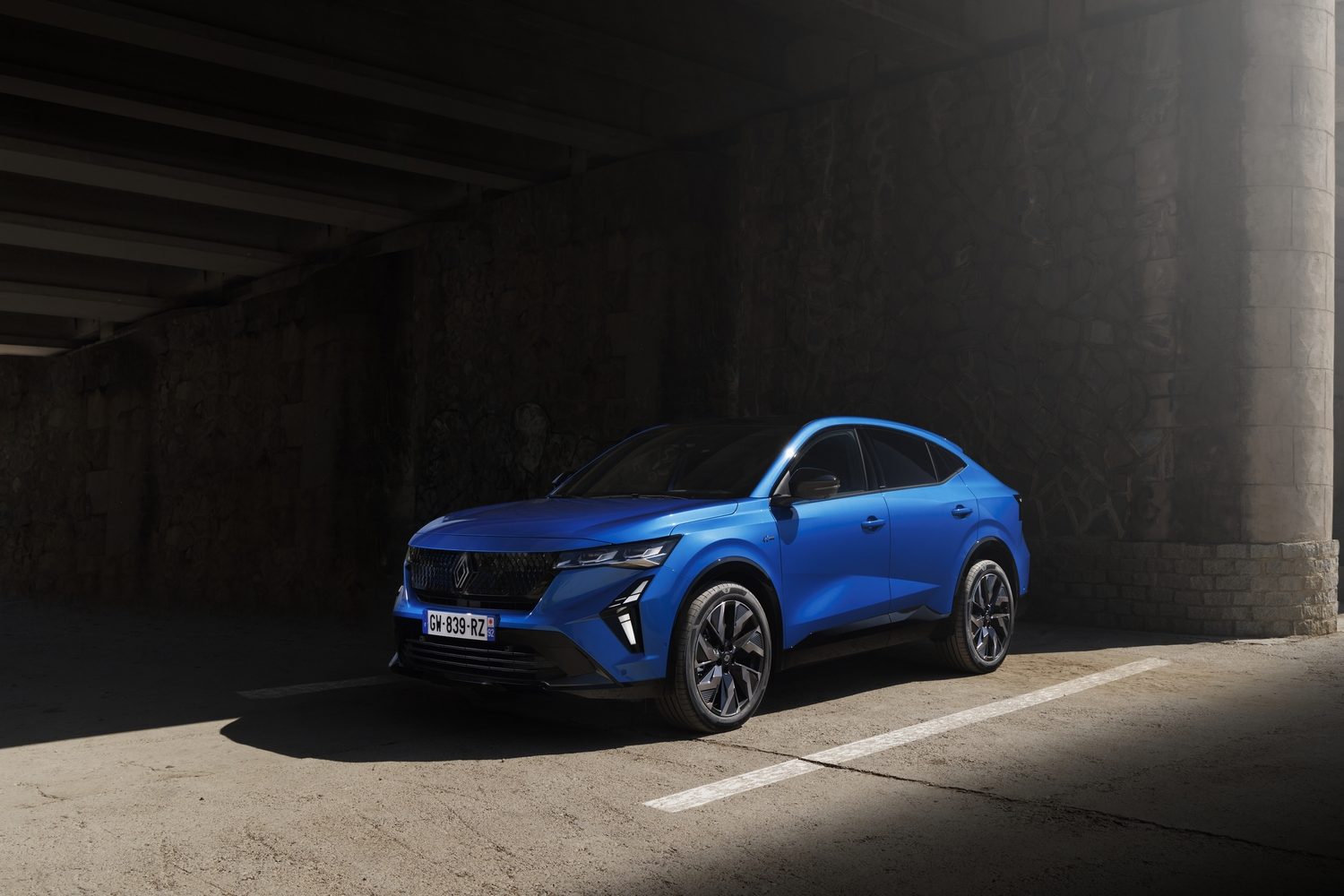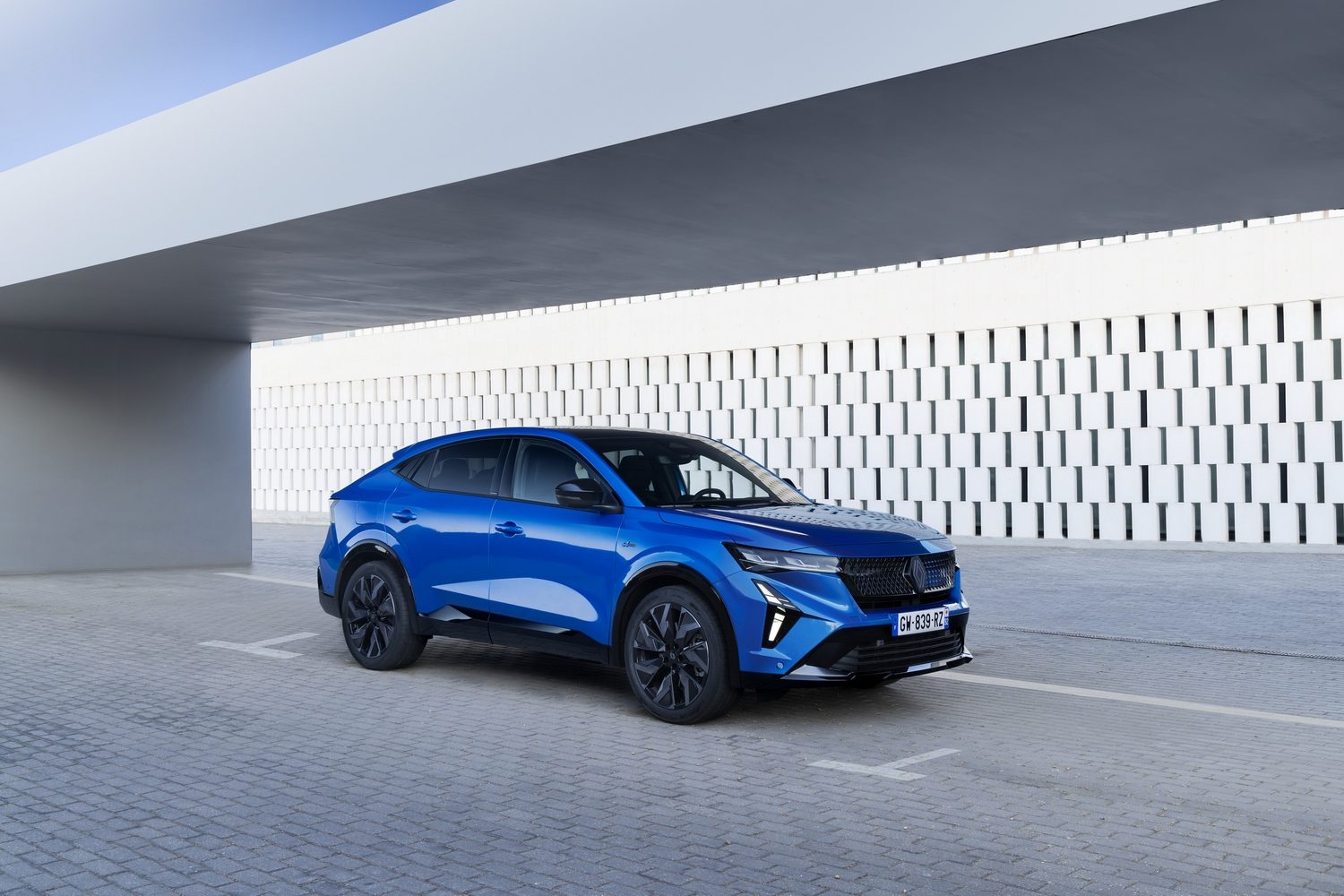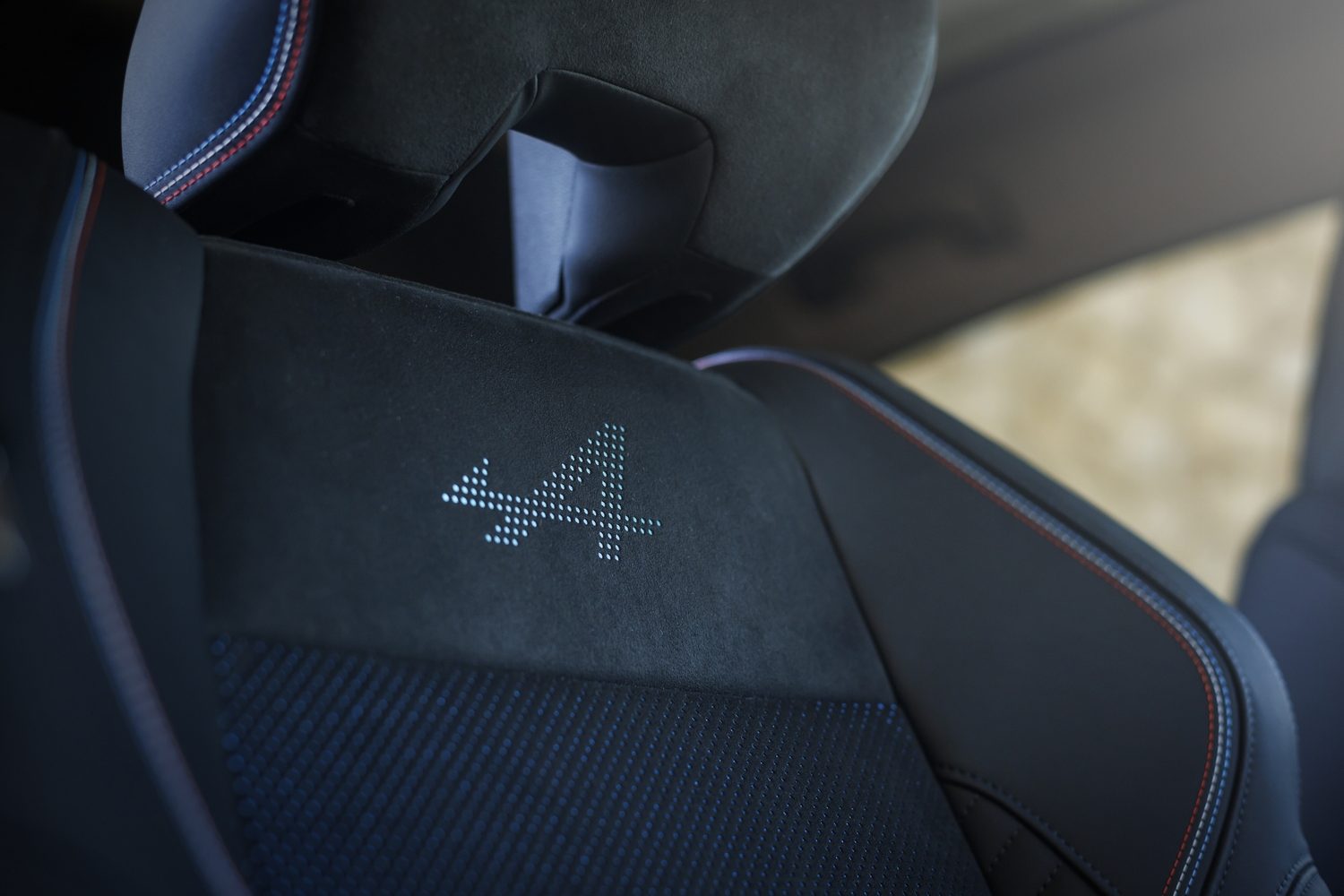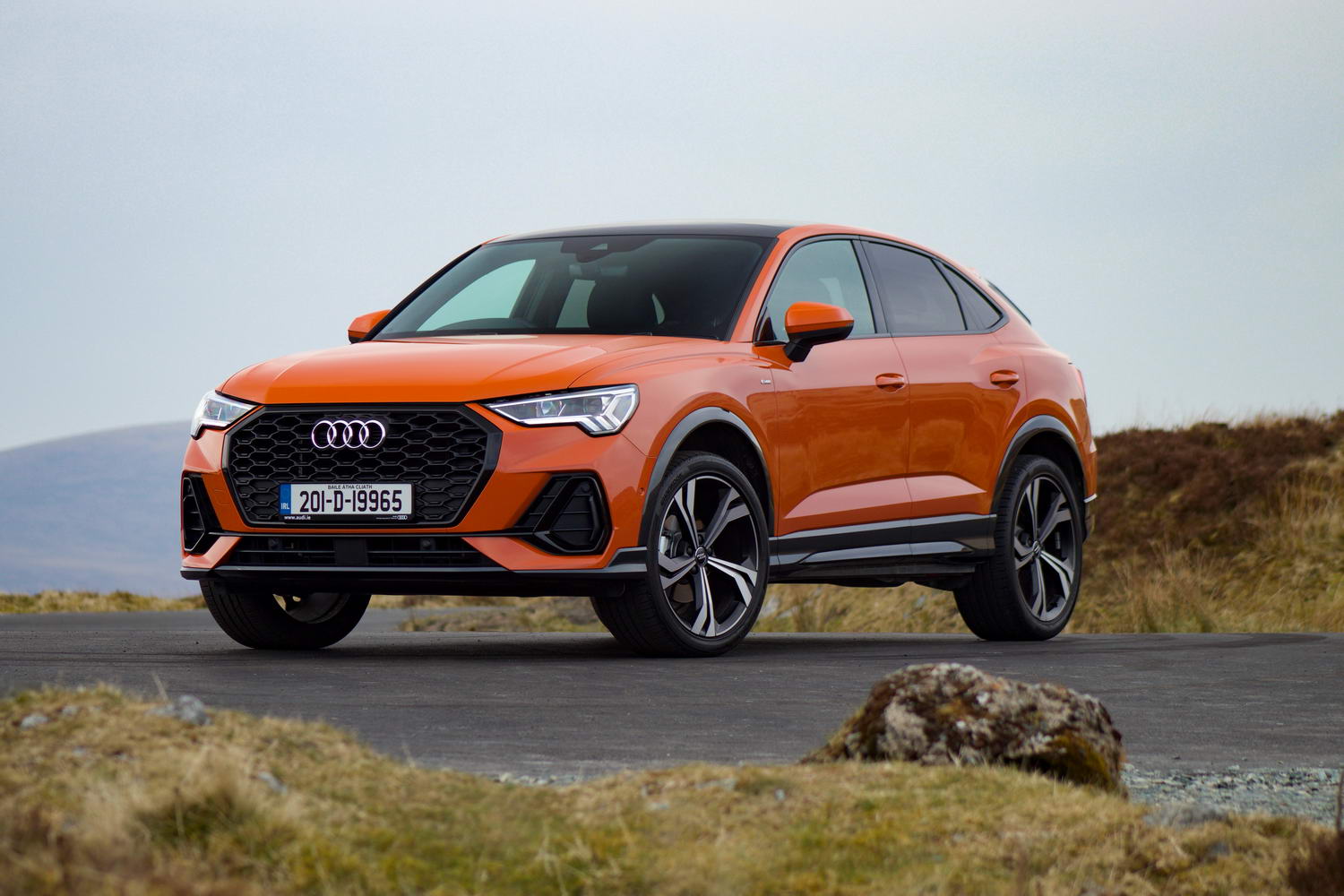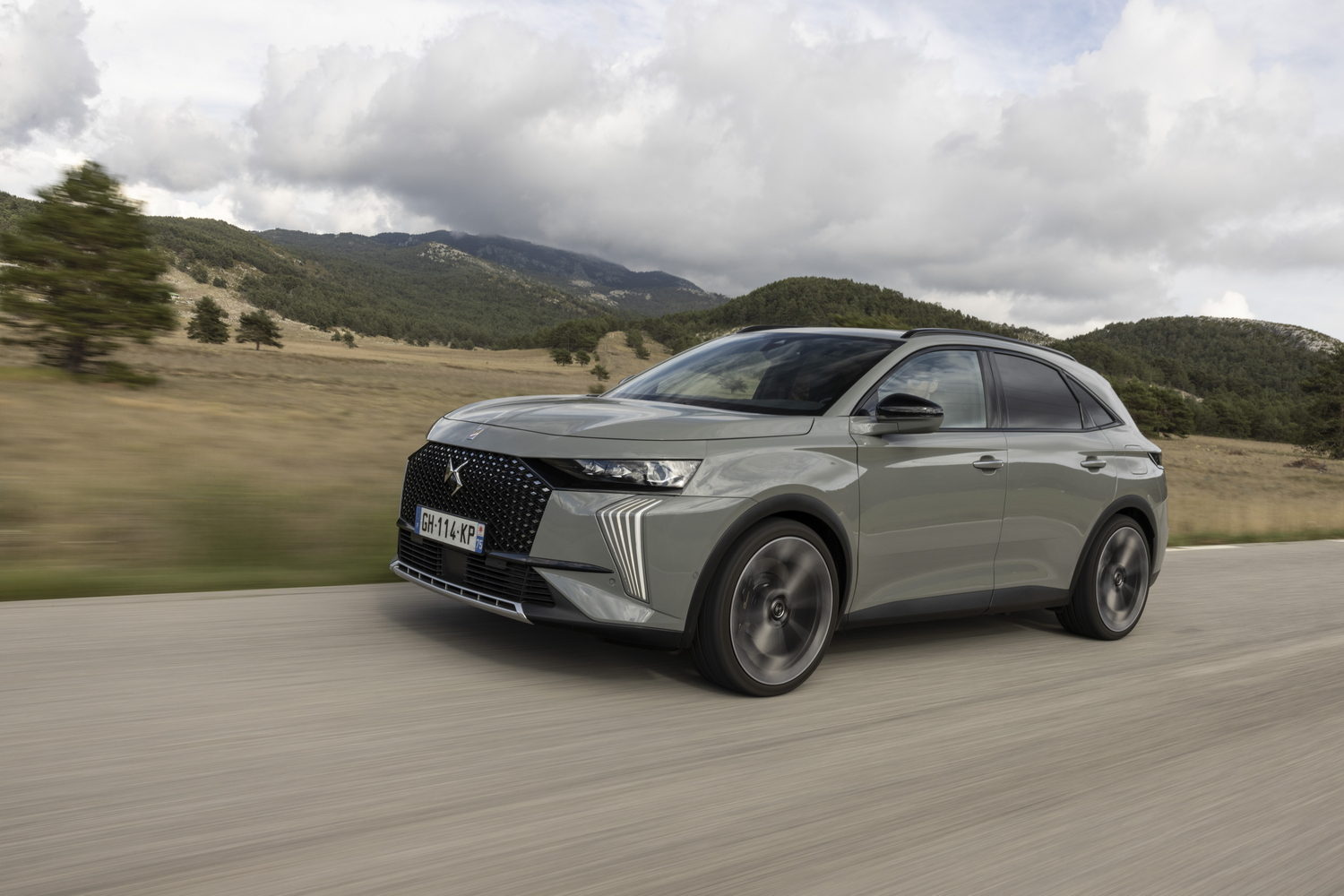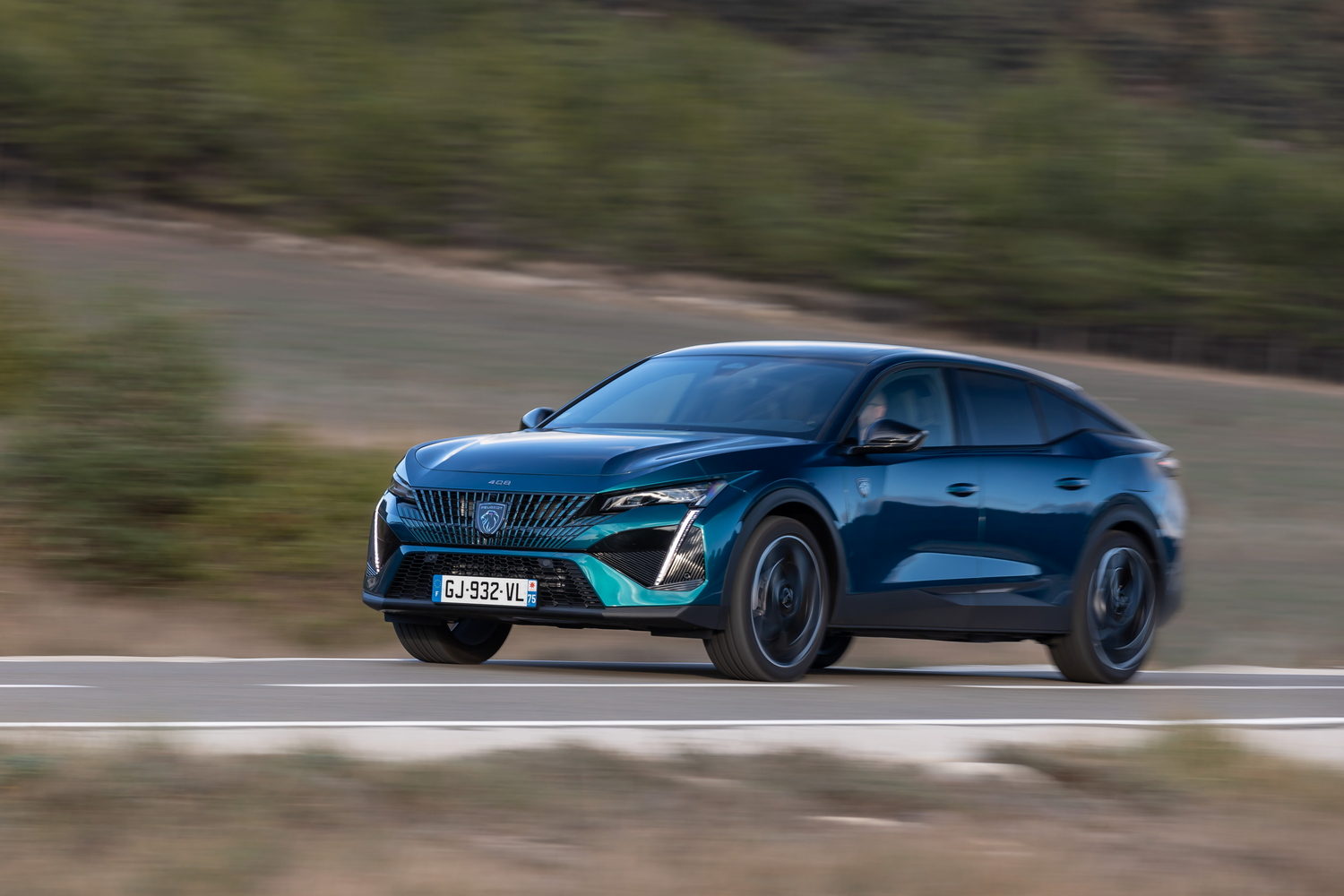Renault is on a roll right now, with new models appearing left, right and centre. Just this year, we’re going to see the new electric Renault 5 arrive, alongside an updated Captur, the new Scenic and the new Symbioz, but perhaps the most ambitious name on the list is this: the Rafale. Designed as a conquest model to steal customers away from German premium brands, the large, coupe-shaped SUV is being pitched as an alternative to the Audi Q3 Sportback and BMW X2. Some in Renault even prefer to compare it with the BMW X4 and Audi Q5 Sportback. But that’s a market in which Renault doesn’t have much experience, and the brand accepts that enticing customers won’t be easy. So, will the biggest Renault on sale in Ireland be unfairly overlooked, or is it just overrated by those with premium aspirations?
In the metal
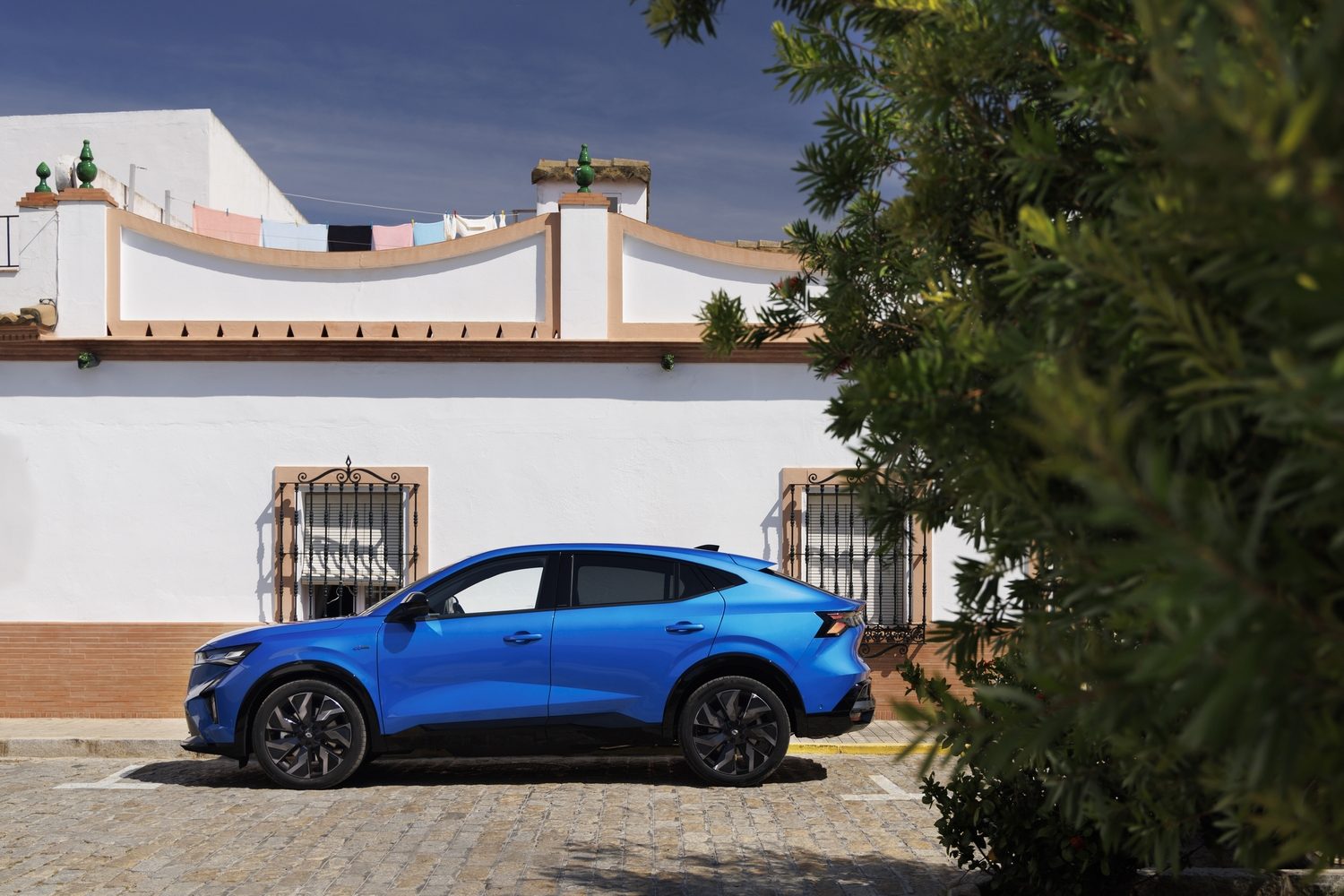
Before we say anything else, let’s acknowledge the Peugeot 408-shaped elephant in the room. Yes, the Rafale is the spitting image of that car, right down to the cat’s-ear shape of the rear spoiler, and there’s a good reason for that: the same person designed the two cars. Nevertheless, the 408 is attractive enough and the Rafale is too, so we won’t criticise it too harshly for that.
Nor will we criticise the car’s size, which means there’s plenty of space on board. Because this thing is pretty lengthy - it’s almost 4.8 metres long - you get lots of room in the cabin, despite the car’s fastback-like shape. The curved roofline does little to damage the carrying capacity, with more than enough headroom for adults to sit comfortably in the rear, and any grown-up of average height will also have ample space to stretch their legs out.
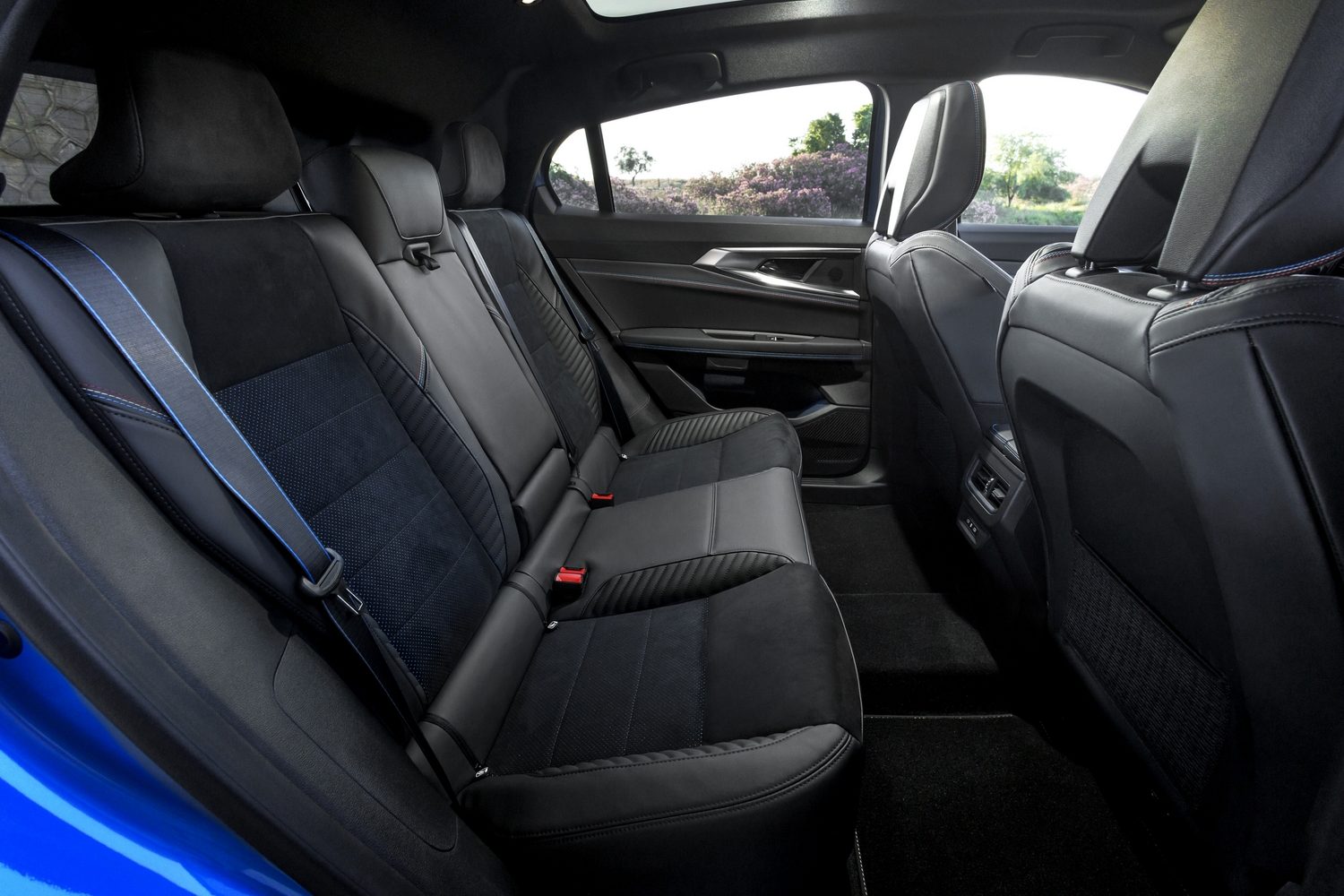
Boot space is more than adequate, too, albeit not quite exceptional. Official figures suggest 535 litres of cargo capacity with all five seats upright, but that ignores the false floor in the boot. While that adjustable panel gives you a pretty flat load bay, it leaves quite a bit of room beneath it, and if you count that as storage, the volume available swells beyond the 600-litre mark. Fold the back seats down (which you can do individually) and there’s a 1,709-litre cargo bay to play with.
Of course, practicality doesn’t just mean storage space, and we’re big fans of the Rafale’s rear arm rest. That sentence sounds faintly ridiculous in isolation, but the fold-down arm rest, which also incorporates a ski hatch for loading longer items, offers more than just a place to rest your elbow. Instead, it comes with USB-C connectors for charging a phone, storage space and cupholders, along with two arms with slots into which you can nestle smartphones, allowing you to watch video on your phone without worrying about holding it to your face. It sounds dull, but it’s a great idea.
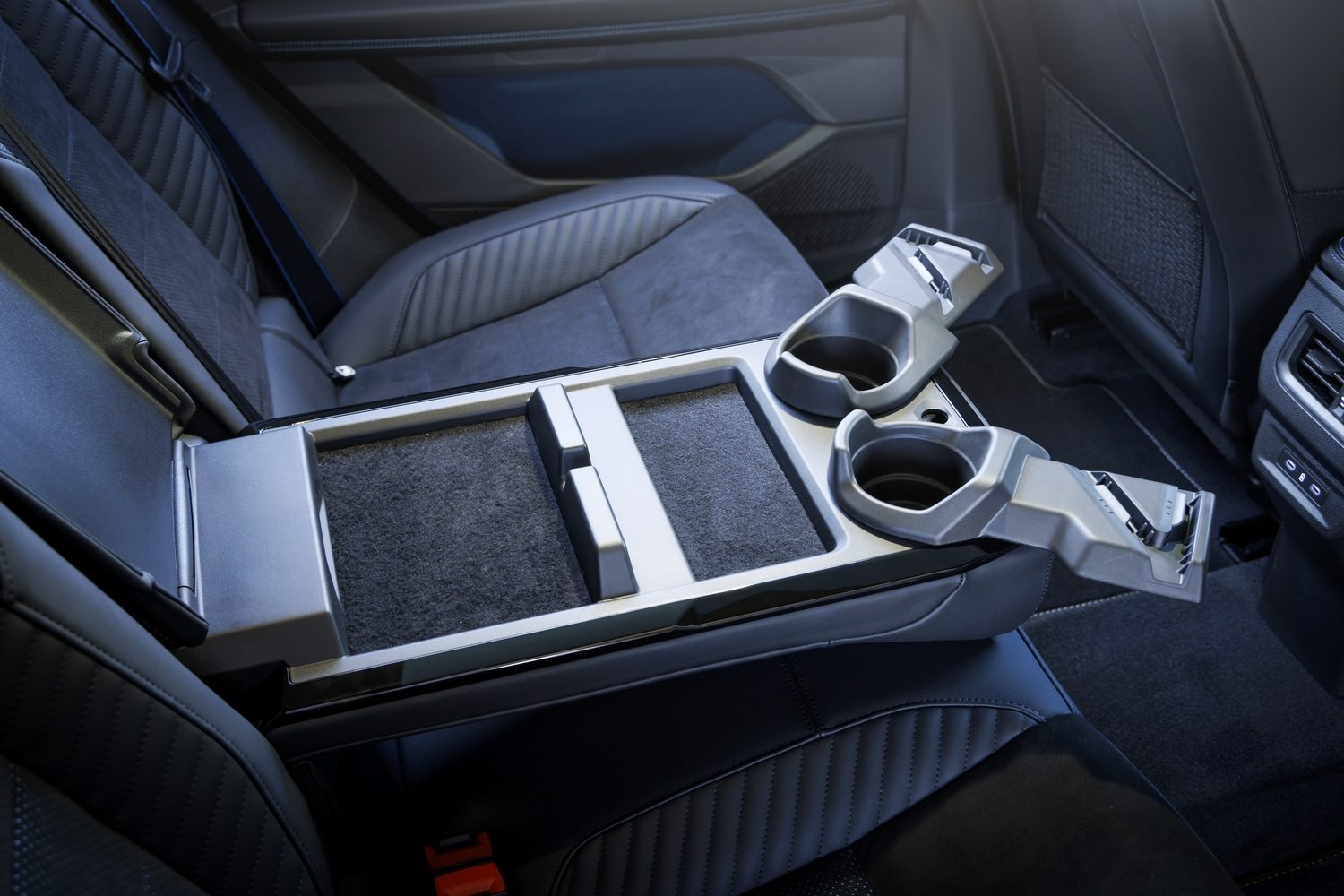
As is the decision to incorporate Google technology in the Rafale’s cabin. Essentially, much of the technology is carried over from the Rafale’s more conventionally shaped sibling, the Austral, but that’s no bad thing. The touchscreen is powered by Google tech, so it more or less works like an Android smartphone. That means it’s mostly very sharp and intuitive to use, and the Google Maps included as standard means you get smart and helpful mapping whatever happens.
This all slots in neatly with the digital instrument cluster and the head-up display that’s fitted to the more upmarket variants. It also works with the raft of driver assistance technology and an important little button to the side of the steering wheel. Using the screen, you can select the driver assistance technology you want (or, perhaps more to the point, don’t want) to use and then you can save that setting, activating it with two taps of the button by the wheel. It means all the stuff that’s really annoying but has to be activated by law when the car starts can be switched off with a simple double-tap, rather than delving into the menu every time you drive.
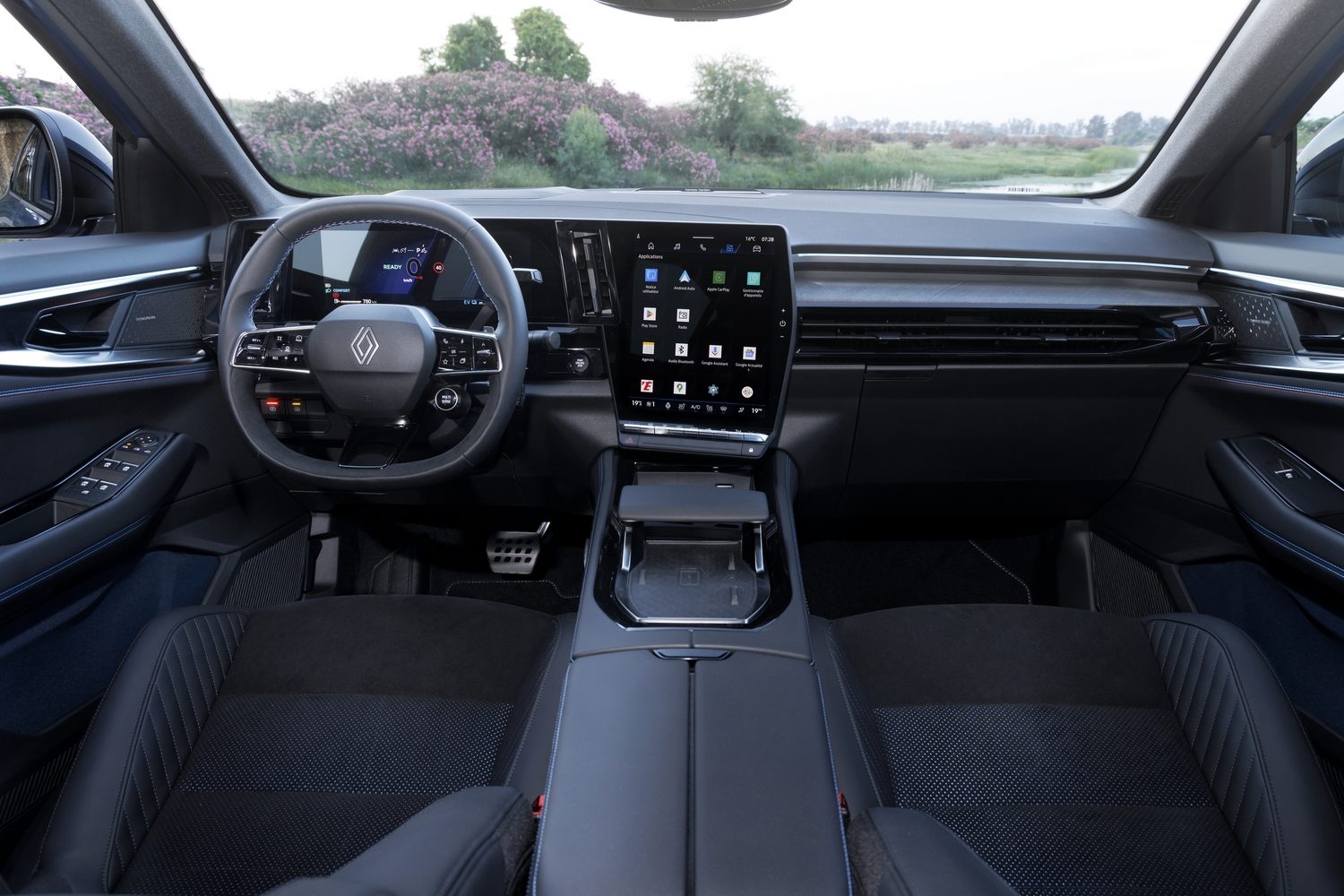
Another pragmatic decision is the inclusion of physical heater control switchgear below the central touchscreen, which is a user-friendly touch, while we love the little sliding arm rest on the centre console. It’s there for you to rest your arm while using the screen, in the hope of more accurate icon taps, but it also moves really nicely, and it looks and feels like it should be in the cockpit of an aeroplane, not on the centre console of a car. It may sound ridiculous, but it’s cool, somehow.
However, it has necessitated the addition of a column-mounted gear selector, which takes the shape of a stalk behind the wheel. Unfortunately, it’s one of a surprisingly large number of stalks behind the wheel. With audio controls, indicators, lights and wipers all back there, it’s easy to catch the wrong one, certainly until you get used to the car.
Driving it
As in the Rafale’s close relation, the Austral, power comes from a hybrid powertrain that combines a 1.2-litre, three-cylinder petrol engine with a brace of electric motors. Together, the three produce up to 200hp and send it to the front wheels via a potentially overcomplicated automatic gearbox.
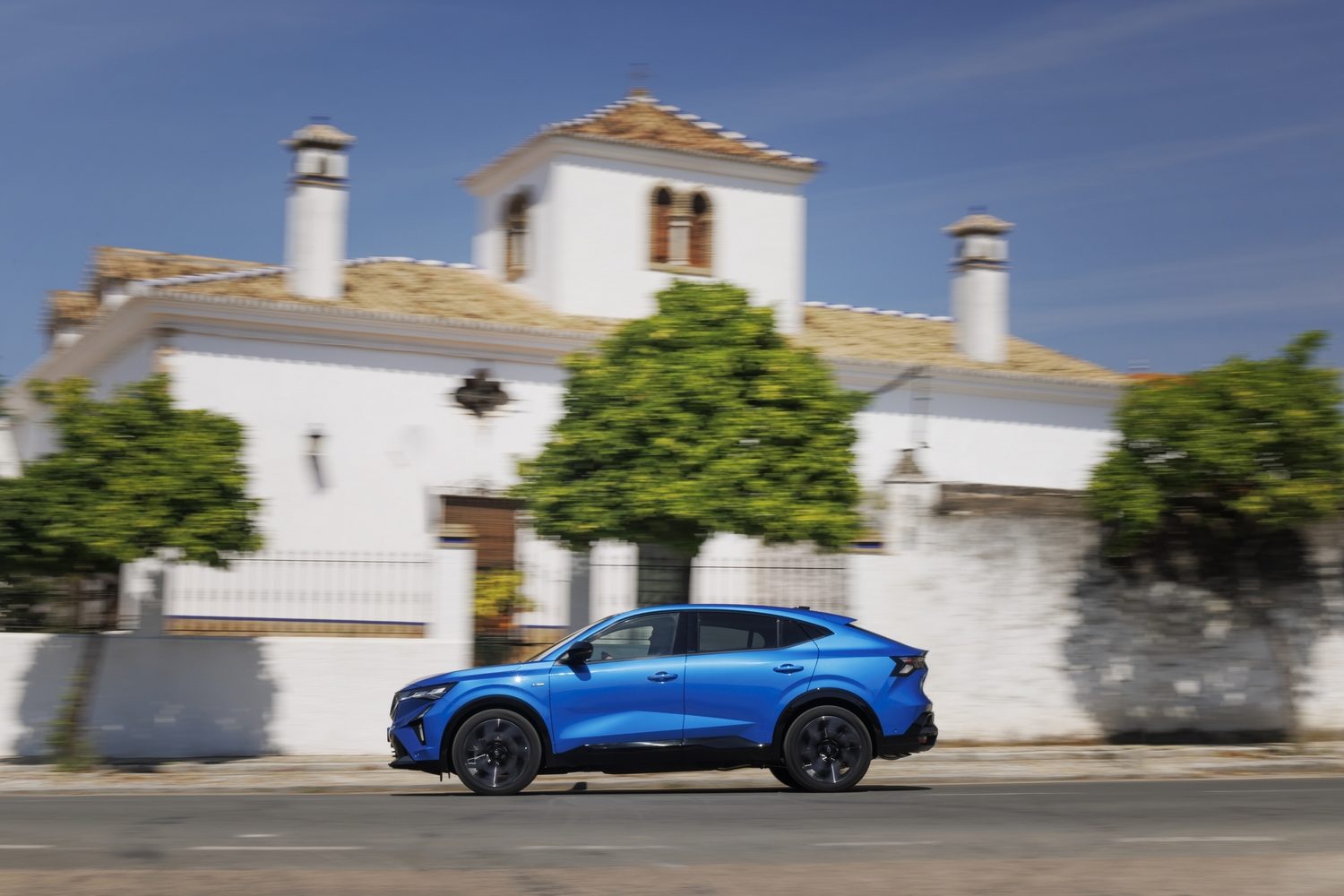
In fairness, gets things right about 95 per cent of the time, but when you want it to be decisive and kick down quickly, it prefers to dither and dally, using the electric motor in a vain attempt to mask its delay. Perhaps as a result of that, the Rafale doesn’t offer what most would consider to be 200hp pace. It isn’t slow by any stretch of the imagination, but it doesn’t feel as quick as the headline power output might lead you to believe.
On the other hand, it is economical, burning through just 4.7 litres of unleaded every 100km, officially, and emitting just 105g of carbon dioxide every kilometre. Ok, it probably won’t match that fuel consumption figure in the real world, but the hybrid system means it can be impressively efficient without the driver really trying, and around town it’ll really come into its own.
The other advantage is that the hybrid system is so smooth. There’s no jolt or shunt as you switch from petrol to electric power or vice versa, and the three-cylinder engine makes a much more characterful sound when pushed than a four-cylinder unit would.
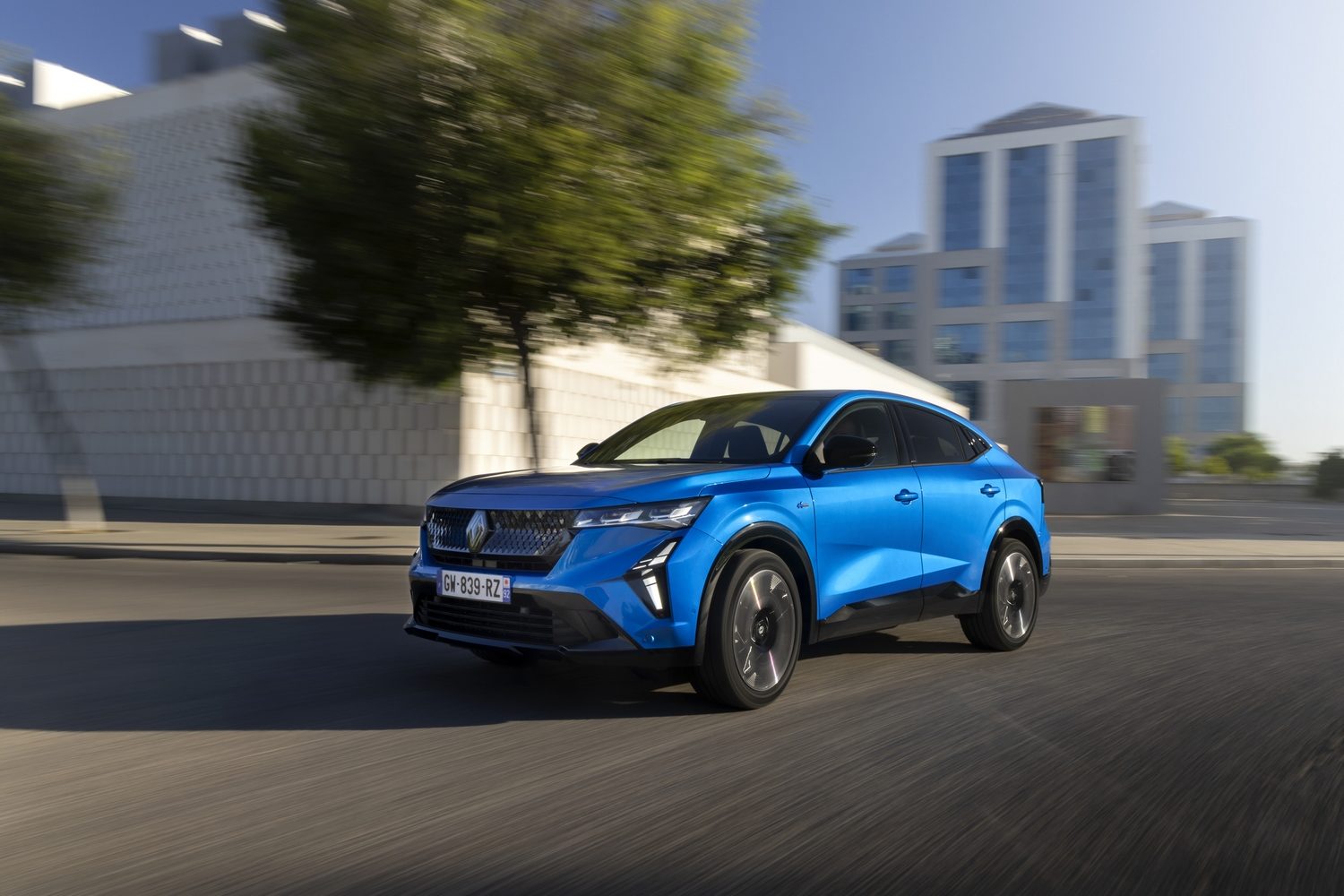
As so-called ‘full’ hybrid systems (as opposed to mild and plug-in hybrids) go, it’s fairly good, and it’s let down only by the transmission. And Renault will offer a more powerful plug-in hybrid option towards the tail end of this year. With much the same petrol engine, albeit tuned a little, it’s set to be similarly smooth, but it should offer 100km of range on electric power alone and it’ll get four-wheel drive, not to mention a tidy 300hp total output.
The range-topping Rafale will also get an adaptive suspension system tuned by Renault’s sporty sibling company, Alpine, and that may be a bit of a game-changer. The ride in the standard car is firm, noticeably so at low speeds, and Renault’s insistence on fitting large alloy wheels to even the lowliest Rafale doesn’t help with that - as great as they look. Things improve slightly at speed, but it never crosses the line into what we’d call comfortable. And we’ve gleaned that from a test on smooth Spanish roads, so Irish asphalt may be a challenge for it if the specification is unchanged.
Body lean is reasonably well controlled, but it’s far from perfect, and numb steering means it feels fairly lifeless even in its sportiest settings. That’s despite the inclusion of Renault’s ‘4Control’ tech on all but the base models, and while that might sound like a clever part-time all-wheel-drive system, it’s something else entirely. It’s a four-wheel-steering system, intended to make the car more agile and more stable at speed by turning the rear wheels by up to five degrees either in the opposite direction to those at the front or the same direction, depending on the situation.
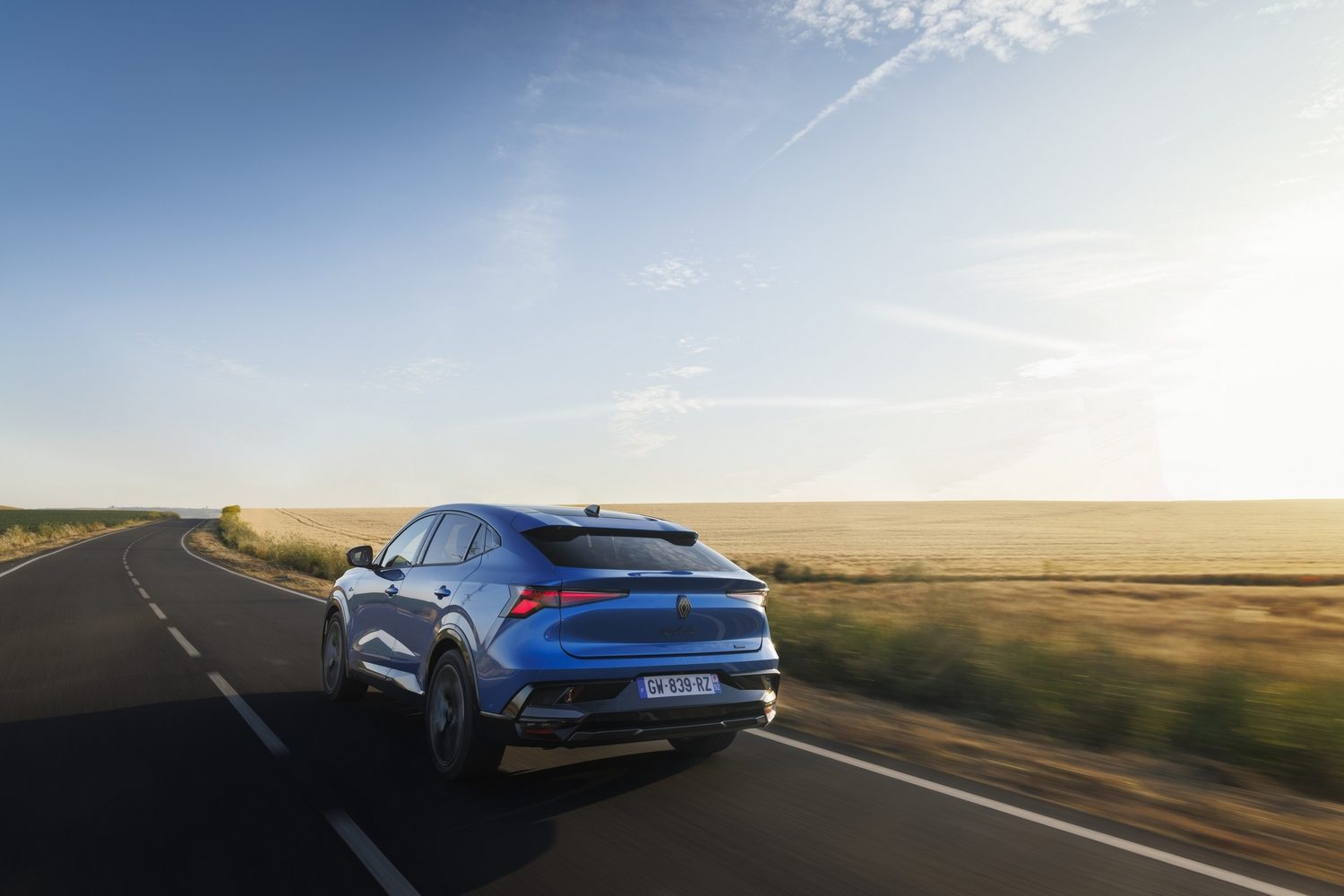
In all, the system has 13 settings, with 13 being agility-orientated and 1 aimed at stability, but both extremes have their flaws. Set it to 13 and the car feels really nervous, with any small movement of the steering wheel sending the nose in a completely new direction. In 1, meanwhile, it’s slightly less twitchy, but it’s more detached than it would otherwise be, which makes it feel vague. The sweet spot is around the 4 mark, in our opinions, but owners should experiment with the system to find the feel they like. In Renault’s defence, the 4Control system does give the Rafale a tight turning circle that belies its size.
What you get for your money
Rafale prices start at €51,495 in Ireland, which pays for the Techno version. That gets plenty of equipment, including a reversing camera, wireless phone charging and 20-inch alloy wheels. That’s about the same as you’ll pay for an Audi Q3 Sportback (though admittedly, the Renault is much larger), and it’s about €10,000 more than the visually similar (and again, smaller) Peugeot 408.
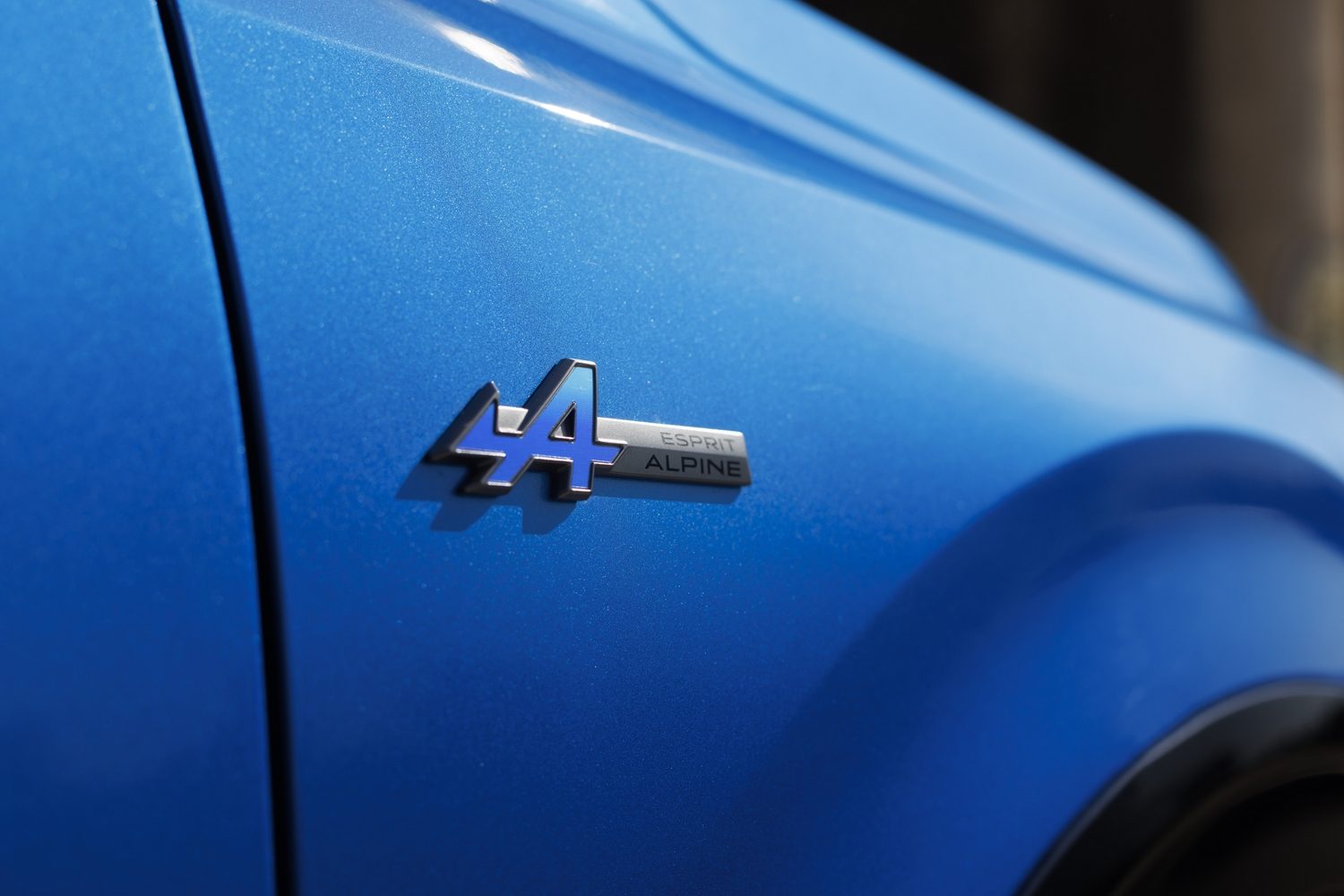
Renault is also selling the Rafale in the Alpine-inspired Esprit Alpine trim with sportier styling and more kit for €55,695. With its cool design touches and additional equipment, including a head-up display, its seems likely to be the most popular choice.
Summary
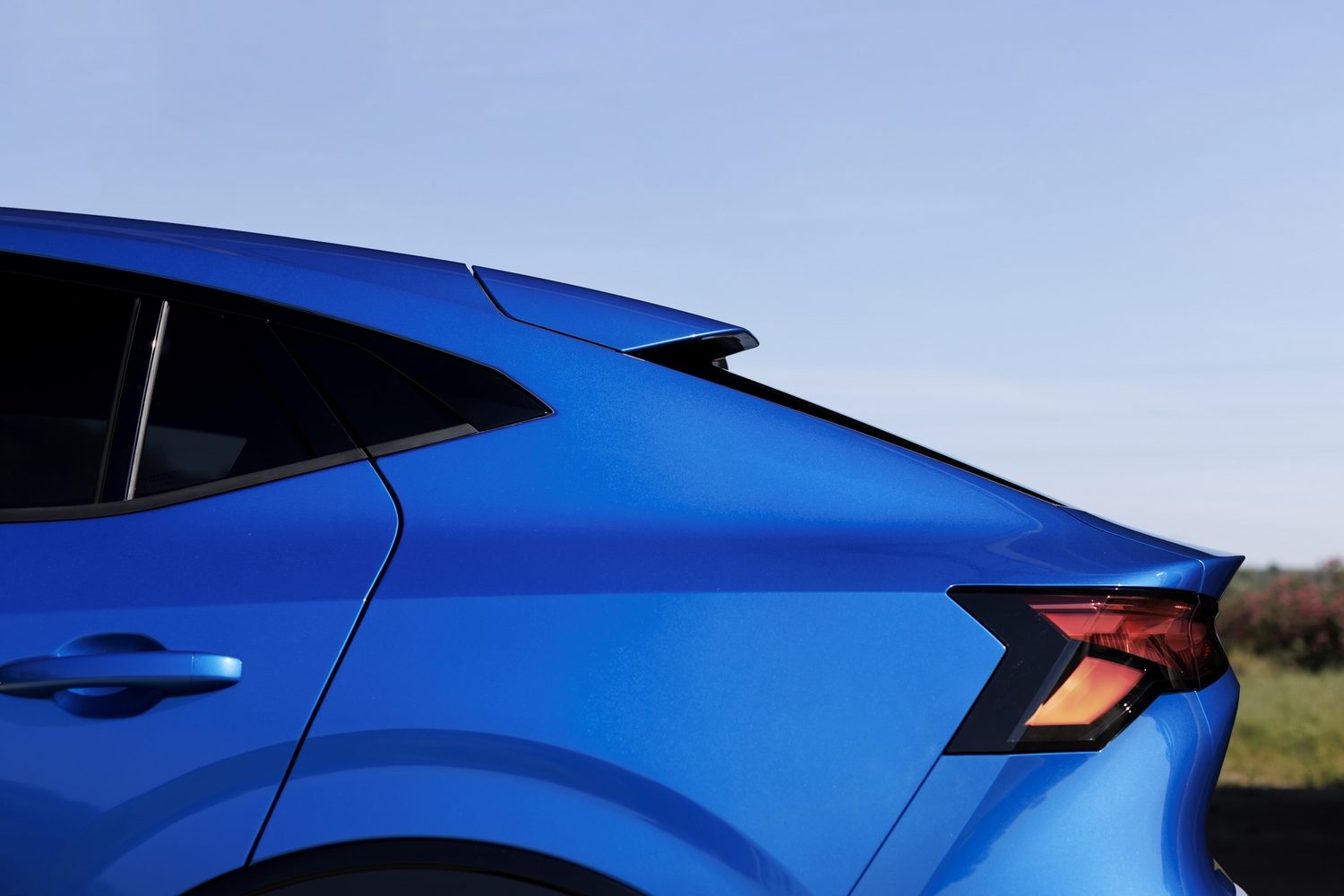
In some ways, the Renault Rafale is incredibly good indeed, but in other ways it really isn’t good at all. All of which leaves us with something that averages out at, well, average, so the car isn’t quite polished enough to take on the German premium marques. However, alongside more mainstream alternatives, it copes a little better, and price tag aside, it’s a solid product with some appealing features that counteract its foibles.

